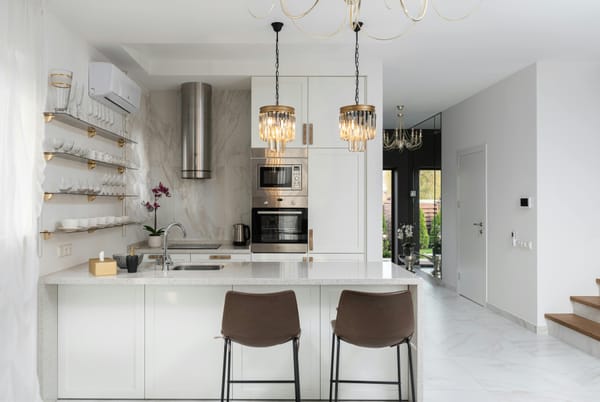



Discovering Helsinki: my personal guide for first-time explorers
Hi! I've called Helsinki home for the last 4 years. Sometimes when a friend plans to visit Helsinki, they often ask where are the must-visit places. In this blog post, I'll share the list of places I took my parents to during their first visit to Helsinki this summer. If you want to bring your loved ones to visit Finland too, I wrote about how my parents got their tourist visas.
If you prefer watching a video instead, here's a Youtube video I made: 2 weeks in Helsinki with my Vietnamese parents || Helsinki vlog. It's on my new Youtube channel where I plan to make videos about traveling and Finland in general, so basically my blog but visualized :D
Below you'll find the list of places that I think are worth checking out in Helsinki, most of them are free to visit! All the photos in this post were taken by my phone.
Helsinki City Center
If you have only a day to see Helsinki, I'd recommend the city center area. There are a few popular places that are located within walking distances to each other.
Helsinki Cathedral
This is one of the symbols of the city. Standing tall in gradient white, this architectural marvel was crafted between 1830 and 1852. Next to it is the Senate Square where in the winter there's a lovely Christmas market. It's free to visit the inside of the church. If you want a Helsinki check-in photo, I think this cathedral is a great spot :D
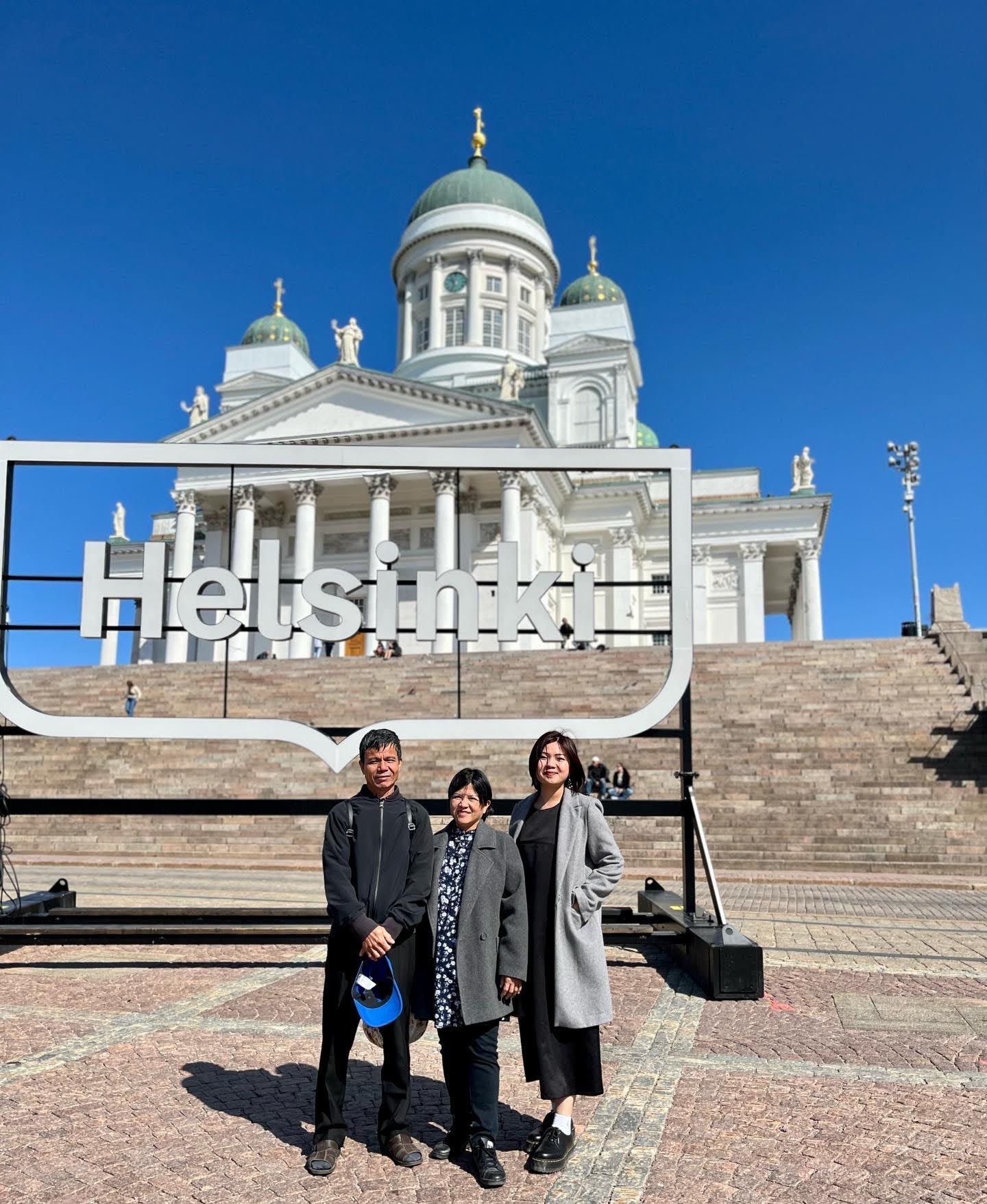
Uspenski Cathedral
Close by Helsinki Cathedral is the Uspenski Cathedral. I call it the Red Church because of its color. This Orthodox church was inaugurated in 1868. It's located on a small hill, so you'll need a bit of exercise to get there. I love the view from this hill, especially for the sunset.
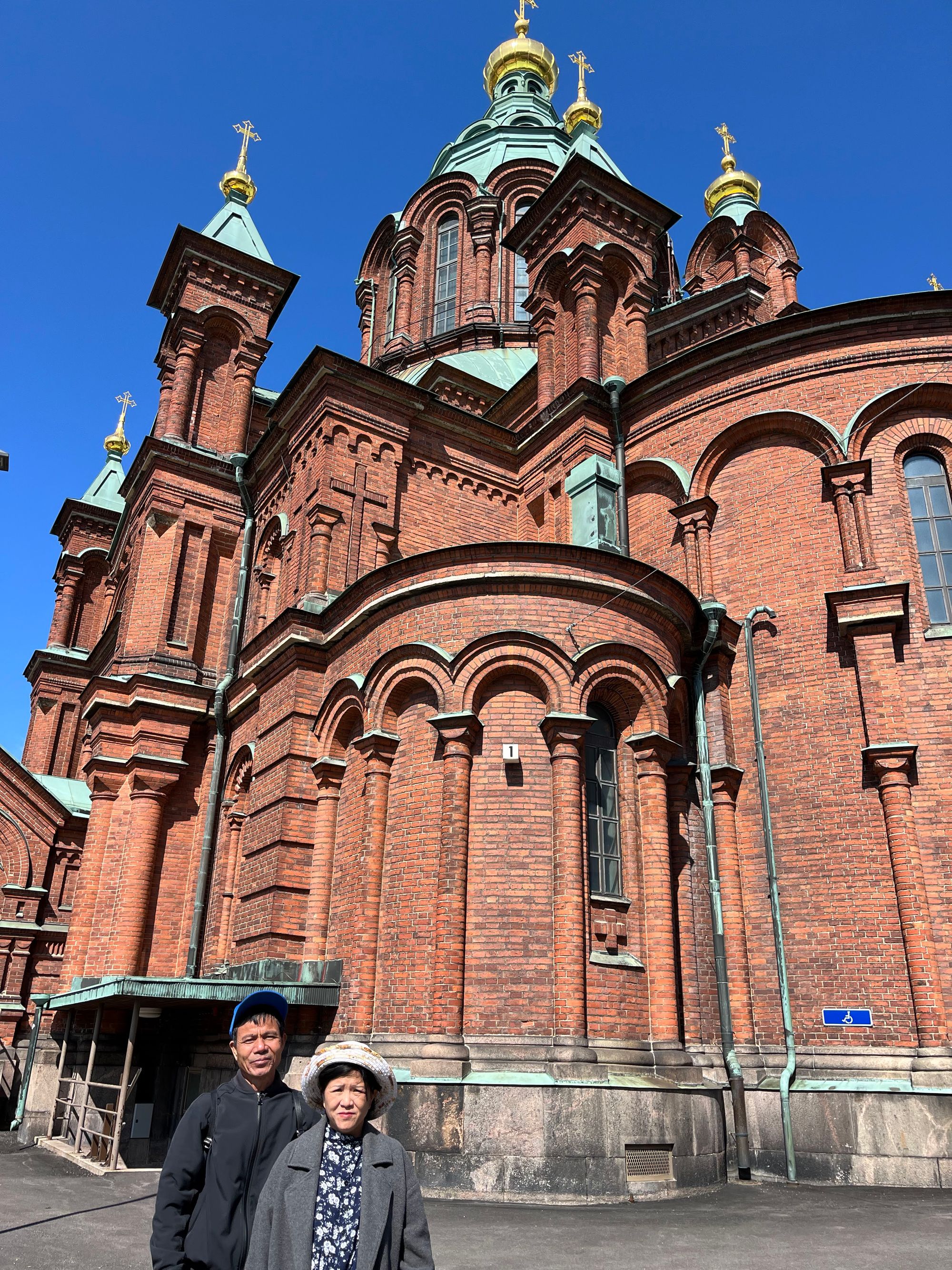
Helsinki Market Square (Kauppatori)
The market square is right next to the water and a short walk from the churches above. In the summer, it's a busy place where various vendors are selling fresh berries and local produce. In the winter, it's a treat to get a pulla and a hot cup of tea there. I searched my library but couldn't find a photo of the square for the summer, so here's a photo I took 2 winters ago.

Helsinki City Museum
Right across from the iconic Helsinki Cathedral, the Helsinki City Museum is a hidden gem with free entry, welcoming visitors every day! Helsinki City Museum is a great place to learn more about the capital's history and the city's development over time. The theme for the exhibition changes every few months. Below is a photo I took from a wall in the museum (If you speak Vietnamese then hopefully you'll spot the funny Vietnamese note like I did :D)
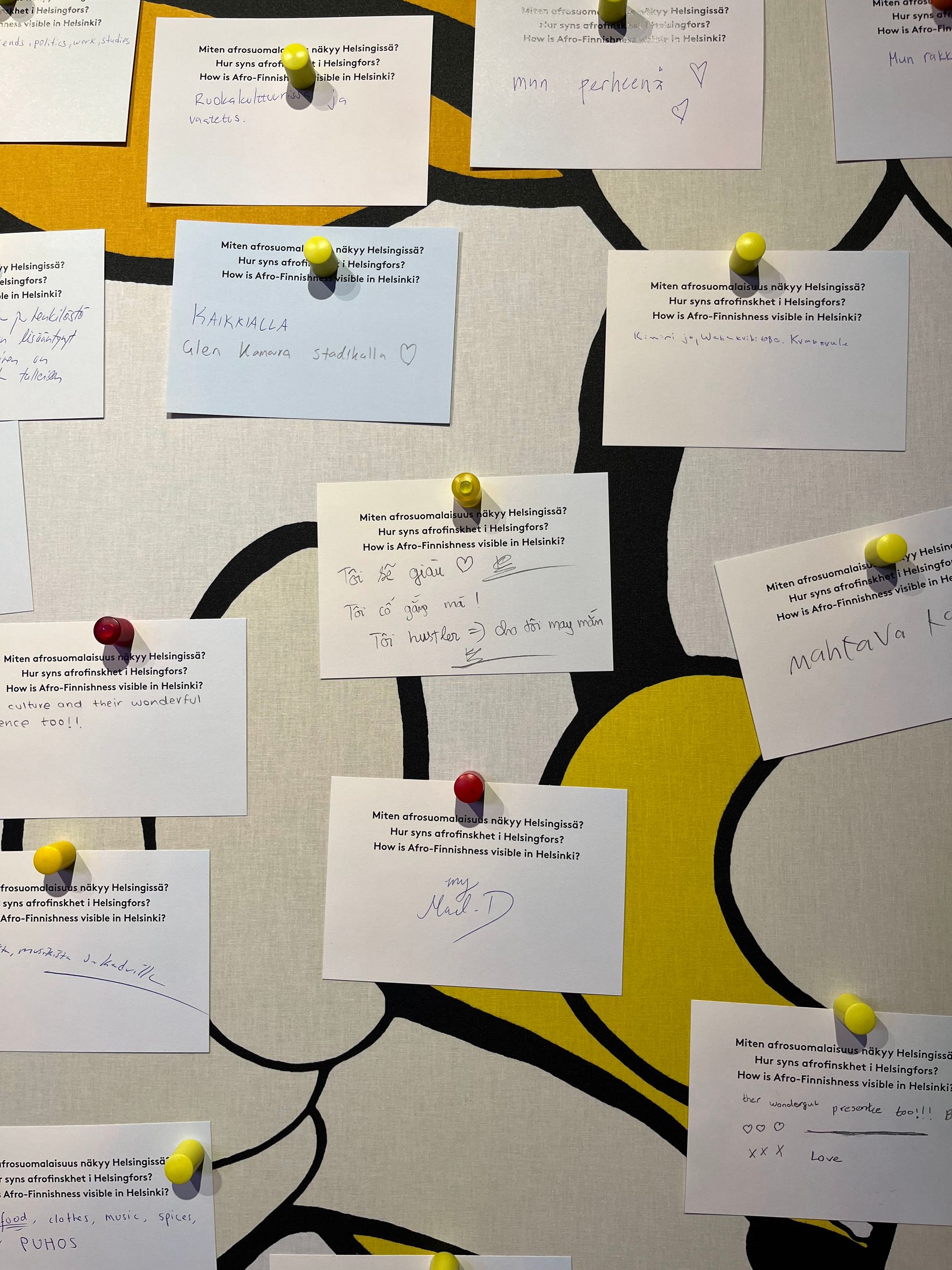
Kamppi
Kamppi is a busy area with lots of shopping options as well as restaurant. In this area, I recommend visiting the Kamppi Chapel. It is known as the Chapel of Silence where people can come and have a moment of quiet reflection even in one of the busiest parts of the city. There is also a popular art museum here called Amos Rex with dynamic exhibitions throughout the year.

Oodi library
Close to the central railway station, this architecture-award-winning library has become one of the hotspots for locals and tourists alike. As a Helsinki resident, it's one of my frequently-visited places. Even though it's "just" a library, this place has way more to offer beyond book shelves: music studios (where I regularly come to sing karaoke for free with my friends), 3D printers, video game rooms, sewing machines, lots of study rooms, a movie theater on the 1st floor...Definitely worth a visit!

Suomenlinna
If you have a bit more time in Helsinki, then a day trip to Suomenlinna should be at the top of the list. Suomenlinna is a world heritage site, a sea fortress with stories to tell. It's an inhabited island so there are actual people living there. A stroll around the island on a sunny summer day would make a delightful memory. It's easy to go to Suomenlinna with your HSL ticket as the ticket includes the ferry ride to the island. Once there, treat yourself at the island's cafes and restaurants, and explore some fascinating museums. My dad loved the canons there and my mom enjoyed the sea and ferries passing by a lot.

Nuuksio National Park
If you stay in Helsinki area for even longer time, consider visiting the famous Nuuksio national park. It's located in Espoo, about 35km away from Helsinki city center. For me, this national park has the most typical Finnish nature scenery: serene lakes, enchanting forests, and rugged crags...There are many marked trails for both beginner and experienced hikers. My parents and I followed a simple trail and got rewarded with a stunning lake view at our destination! This national park would be great for a day trip where you can have a picnic and immerse yourself in Finnish nature.

Seurasaari Open-Air Museum
Looking for a blend of outdoor fun and a dash of history? Seurasaari would be the perfect place! The Seurasaari Open-Air Museum is like stepping into a time machine, with authentic historic Finnish buildings scattered across the island. From charming farmsteads to cozy cottages and elegant manors, each one tells a tale from Finland's past. My parents and I had a fun time there learning about Finland through these buildings.

Lammassaari Nature Boardwalk
Last on the list is a place that I'd have loved to take my parents to, if I hadn't been sick for 3 days when they were here: Lammassaari nature trail. I visit this place every summer and autumn. For me it looks like something straight out of those nature documentaries on National Geographic. Picture a raised wooden pathway, letting you wander through the landscape of Lammassaari Island. Along the way, there are cool signs teaching you about the local plants and little animals. The bird-watching platforms provide a wonderful view. Occasionally you might catch a glimpse of a squirrel or even a deer. It's a mini adventure every time!


If you make it this far, here's a bonus list that I made before my parents came to visit. We didn't have time to visit every item on the list. Nevertheless, my parents still had a great time exploring Helsinki, from trying out all the public transportation options to visiting all the Finnish supermarkets...

Again, if you wanna see a video of my parents' trip in Helsinki, check out 2 weeks in Helsinki with my Vietnamese parents || Helsinki vlog.
Final words
Living in Hesinki for almost 4 years has taught me that while it may not be the most popular tourist spot, there's something special about the city. I've grown to appreciate the uniquely charming beauty of Finnish nature and culture. Seeing my parents enjoy these simple yet wonderful things about Finland during their visit made me really happy.
I hope this post gives you some ideas about where to visit next time you are in Helsinki :) Comment and share with me your favorite spots to visit in Helsinki! Cheers!
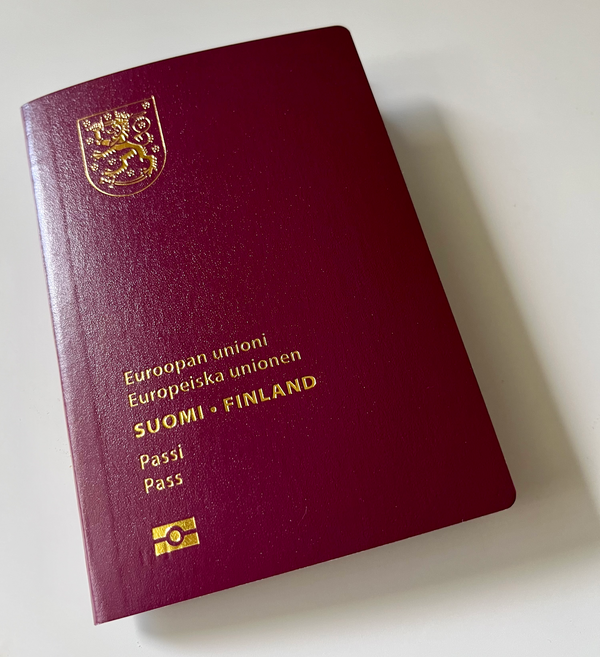
How I got my Finnish citizenship: journey to getting a Finnish passport
Hi, in today’s blog post, I'm sharing about a topic that means a lot to me: How I got my Finnish citizenship. I will write about the whole journey, from the date I arrived in Finland for the first time, until the date I held the Finnish passport in my hand.
Disclaimer: I am not an immigration expert, everything in this post is written based on my own experience.
By the way, I updated my blog a bit: It now has a much shorter URL and it wears a new theme. I now use Ghost instead of Wordpress because Ghost has some very cool built-in functions, subscribing is one example. Consider subscribing to my blog to get the latest updates! At the beginning of this year, I had "Invest more in the blog" as one of the new-year resolutions, so I'm making a conscious effort to write more often :) If you are reading this, subscribe and let's stay in touch!
Alright, back to the Finnish citizenship. According to the official website from Migri, one needs to fulfill the below requirements to be able to apply for Finnish citizenship. Let’s go through the list of requirements together.
Requirements for becoming a Finnish citizen
You are at least 18 years old and your identity has been reliably established
I arrived in Finland on 03/02/2017. I was 19 years old at the time, and 25 when I received the Finnish citizenship. I am a Vietnamese citizen and have a valid Vietnamese passport. Fortunately, Vietnam allows dual citizenship, and Finland as well!
You know Finnish or Swedish on a satisfactory level
From what I have seen, the easiest and most common way to prove this is to take the YKI test. One needs to pass at least 2 out of the 4 skills (reading, listening, speaking, writing) and the combination has to be correct (at least one active and one passive skill). According to Migri, the accepted combination is seen in the image below:
I think this is the most difficult requirement for the citizenship application because learning a language takes a lot of time and practice. I already wrote about my Finnish language learning journey and how I passed the YKI test at the first try, the post also includes all the resources I used to study Finnish.
You live in Finland and you have lived here long enough
The requirement is that you have to live in Finland for 5 years without interruption.
Migri explains the rules to calculate period of residence on their site. My understanding is that in order to make your residence uninterrupted, your traveling outside of Finland should follow these rules:
- Short trips like weekend trips or a few days' trips are fine, there’s no limit.
- One-month-long trips are fine and also unlimited.
- 1-2 month absences: maximum 6 times.
- 2-6 month absences: maximum 2 times.
Knowing this information, I tried to keep my abroad travels within the limit: I did an exchange in Japan for 3 months, went home to Vietnam every year before Covid for about 1-2 months each time (total 4 times), and had a lot of short Europe trips over the years.
In the application, you are asked to list all abroad travelings over the years (destinations and dates). I only listed the big ones, which were longer than 10 days.
About calculating the residence period: I arrived in Finland with a visa type B, which is a student visa. It means that every 2 years on a visa type B equals 1 year that could be calculated towards this 5-year requirement.

- I had a student visa from 2017 until I graduated in 2020, so 4-year student visa equals 2 years for citizenship application.
- Then I was on my work visa from 12/2020 until I applied for citizenship in 01/2023, so 2 more years accumulated.
By the time I applied, I had about 4 years of continuous residence in total. And it still works. Because according to this Migri FAQ, you could already apply after 4 years if you passed the language test. Another explanation that I heard often is that the processing time for a citizenship application is usually quite long (6-28 months), so by the time your application gets processed, it’ll already be 5 years or more.
You are not guilty of any crime or no restraining order has been issued against you
I guess this is self-explanatory, as a clean record is preferred everywhere. The Migri website says petty fines are not a deal-breaker. So I believe if someone forgot to pay for a metro ticket and had to pay a fine, it’s not gonna stop them from getting the citizenship.
You have met your payment obligations
I think this is about having good credit, that you pay your debt, your taxes and any fines. Fun fact: I had my final back taxes decision of this year on 21/06/2023 and paid it immediately that day. The next day 22/06/2023 my application got to the processing phase and I had my decision within a few hours on the same day. I don’t know if the two have anything to do with each other, but it’s still an interesting coincidence.
You have informed us about your means of support
You can find official info about means of support here. In my case, I listed in my application all the paid jobs that I did in Finland:
- Cleaning jobs in N-clean and Sol in Turku. I worked on the ships for a few months over the summer when I was a student. I don’t have the contracts anymore, so I provided the names of the companies I worked for, the work period, and some contact info of my supervisors at that time.
- Student Assistant job in Turku UAS. I still have a copy of the contract so I submitted it.
- Software Developer job in my previous workplace. I submitted the contract and the last 3 pay slips from the company.
- Software Engineer job in my current workplace. I submitted my contract and pay slips from the latest 3 months.
Citizenship application process
Fill in the application in EnterFinland and pay for it
See my general checklist for an EnterFinland citizenship application below:

This might be irrelevant, but I also submitted a scanned version of my Bachelor's Degree, as I graduated from a Finnish University of Applied Sciences. I don't think it's required anywhere, but I still had it included in my application.
The citizenship application costs 460 euros when applying online (at least in January 2023). See the fees details from Migri here.

Book an appointment to visit the service point
You can book an appointment from Migri's reservation website. Remember to bring all the original documents that you submitted in your EnterFinland application. The non-negotiable ones are your passport, residence permit, and the YKI certificate. On the day of the appointment, try to come 5-10 minutes early and listen attentively in the waiting room, because they will call out your name and the room number you should go to, at the exact time of your appointment.
This appointment is said to be a mini language evaluation, as you are expected to communicate in the language that you took the exam in (Finnish or Swedish). Some of my friends say that in case you took the Swedish exam and your interviewer doesn't speak any Swedish, you may get away with speaking in English (?), but I am not sure how true this is.
Because I took the Finnish language test, I spoke in Finnish at the appointment with the Migri officer. He didn’t ask me so much, just a few basic questions about my address, my work, if I own my own company or if I work as an employee…The longest part of the conversation was when I tried to explain to him why there were 2 stamps from the Berlin Wall (?) in my passport 😩. With both verbal and body language efforts I told him about how I was 19 and thought that a 2-euro stamp in my passport would be so cool because it was proof that I visited Berlin (tip: DON’T have any unofficial stamps in your passport!!). Anyway, the whole meeting was about 20 minutes long and not as difficult as I imagined.
Wait for the decision
So after all that hard work with the application and the verification appointment, all I had to do was...waiting. There's a way to track your application with the Kamu chatbot from Migri. I actually tried to check my application status over time, see below an authentic record of my application's queue number:

I submitted my EnterFinland application on 08/01/2023. I had my in-person appointment with the Migri officer on 16/01/2023. My application got to the processing phase on 22/06/2023 in the morning around 9 a.m. After 2 hours, I logged in to EnterFinland to find out that a decision was ready and that I became a Finnish citizen! No further documentation was required in my case, yay :D They didn’t send a separate email about the ready decision, so logging in EnterFinland was the only way to find out. The total waiting time for my case was 5 months and 4 days. It’s a lot better than the expected processing time on Migri website (6-28 months), and for that I am thankful!
Order passport and ID
After getting the citizenship decision, everything is automatically updated on the system, so you could immediately order your Finnish passport and ID from Poliisi. There was a deal when I ordered mine, that if you order both passport and ID at the same time you’ll pay 100€ for both and save like 8 euros. Check out the fee details here.

If you don’t have a photo that has been taken in the last 6 months, then you’ll have to get a passport photo first. I recommend getting the photo’s electronic code option for more convenience.
You also need to book an appointment to the police station so they could take your fingerprints. I received my ID and passport exactly 1 week after the appointment at the police station.
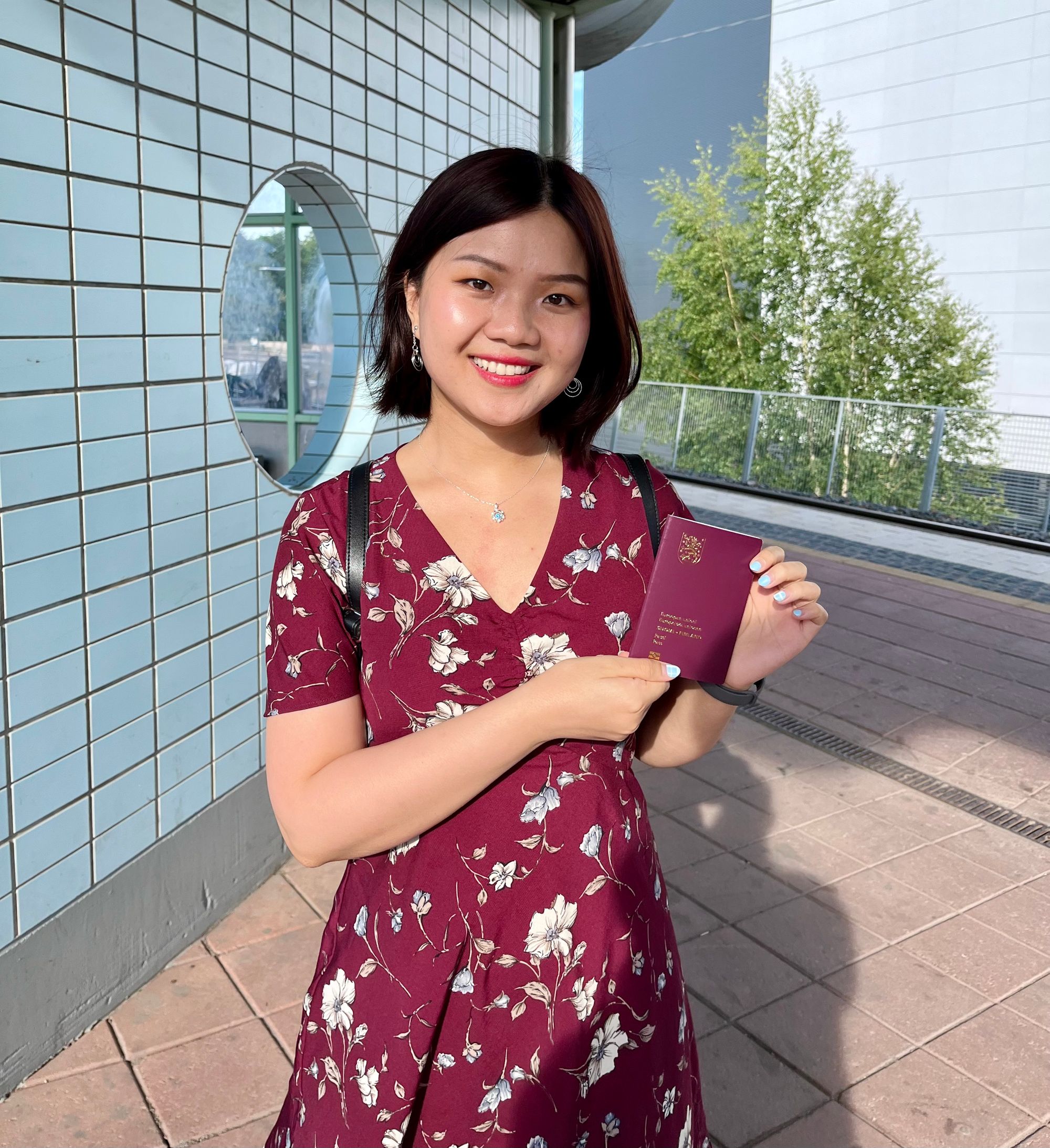
Final words
It was a long road to get the Finnish passport, but the benefits of a Finnish passport are clear to me. Finnish passport ranks third in the world in 2023, meaning traveling around is a lot easier. Finland has been the happiest country in the world for the last 6 years. For me, it translates to a safe and clean environment, easy access to nature, free education, good social safety nets, accessible health care, and a highly educated population. Holding a European passport also opens many doors, because in case I ever want to move to another EU country, the amount of paperwork would (hopefully) be significantly less overwhelming. If you have lived in Finland for more than 3 years, I'd highly recommend taking the time to learn the language and apply for Finnish citizenship.
If you find this post helpful, subscribe to my blog to get the latest updates about new posts :) It's completely free!
Cheers!
If you find my content helpful, support me by buying me a boba:

How my parents got to visit Finland: guide for visiting-friends-and-family visa application
Hi, it's been a while. This year, I finally checked one of the biggest boxes out of my bucket list: I brought my parents to Finland for a visit! I got to show them ways of life in Finland and a few other countries in Europe :)
In this blog post, I will share the process of applying for and getting a visiting-friends-and-family visa to Finland. As my parents know practically zero English, I was the one behind most of the paperwork.
As I am Vietnamese, I will write only about the experience of getting a visa from Vietnam. Hopefully it is similar in other places as well.
The process of getting a visa to Finland is stated quite clearly from this site: FinlandVisa. The visa type we chose to apply for was "Visiting family or friends" because I have been living in Finland for the past 6 years, so we thought this would be the most fitting type of visa.
I will go through each bullet point from the above website because they are the official requirements from Ministry for Foreign Affairs of Finland.
Visa application form with a photograph
To fill in the application, you could go to https://finlandvisa.fi/, create an account, fill in the application there and print it out later.
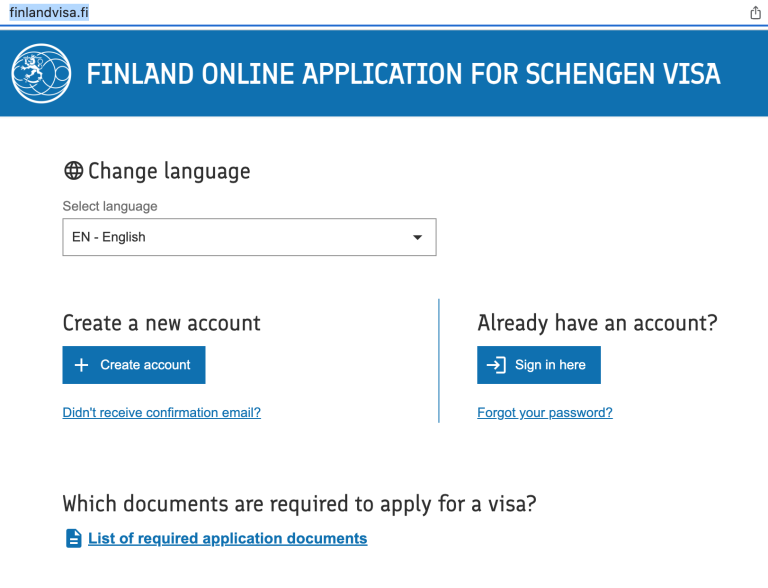
The application is quite straightforward, remember to fill in all the information accurately. At least the below info will be required:
- Name, Date of birth, Nationality, Marital status etc...
- Passport number and passport info
- Home address and phone number
- Occupation and employer's info
- Purpose of the journey
- If fingerprints were previously collected for Schengen visa
- Info of the inviting person (aka host/sponsor, in my case it's me)
- How the cost of living and traveling will be covered
After you are done filling in the info for the application online, remember to print it out and bring it with you later to the point of contact.
About the photograph: the VFS office in Vietnam offers the photographing service for a small price (about 2.5 euros per photo, see https://visa.vfsglobal.com/vnm/en/bel/additional-services). I advised my parents to use this service instead of taking photos beforehand, to make sure that the photo's size and quality are up to standard.
Travel document
This may be an obvious one, but for anyone who wants to travel outside of the country, a passport is mandatory. My parents have had their passports for a few years now, so this wasn't an issue. Make sure that the passport is valid for at least another 3 months after the planned departure date of your trip.
Travel medical insurance
I bought travel insurance from Swisscare because I used their service before and it was good. The cost for a travel insurance was pretty reasonable too, check it out here: Swisscare. Remember to choose Schengen Visa Insurance instead of International Travel Insurance because there's quite a gap in the prices. If your visa application gets rejected, you will receive a refund from Swisscare according to their policy (at least at the time of my purchase which was February 2023):

Documents confirming the purpose of the journey
Note: Any documents mentioned below will have to be translated to English and notarized, unless they have English on them already. Reserve a week for this translating process to make sure you have all of the documents in English versions.
Transport reservations
You need to submit flight reservations for the journey. If you don't want to pay the whole flight costs upfront and risk losing the money in case of visa rejection, there are sites out there that allow you to make flight reservation without immediate payment. That's what we did too. I submitted a flight reservation for the visa application and only paid for real flight tickets after my parents' visas arrived. In fact, this is the recommended way from FinlandVisa's site as well.

For Vietnamese speakers, I used this guideline to get flight reservations from VietnamAirlines. Print out the reservations after they arrived in your mail box.
Proof of accommodation
Because I am the inviter for my parents, their main accommodation is my apartment in Finland as they would be staying with me throughout the trip. This was stated in my invitation letter. If you want to visit other countries in Europe during your visit, then you need to provide the hotel reservations under this category.
To make things less complicated for the visa application, at the time of applying I stated in my application that my parents will be staying in Finland only, so there was no need to submit accommodation reservations and flight/train tickets.
Invitation letter
I wrote a simple invitation letter using the template provided by the Embassy of Finland in Hanoi (template here), signed it and sent the pdf version via email to my parents so they could print it out.
About the content of the letter, I tried to keep it simple. The followings were in my letter:
- Why I am inviting my parents to Finland.
- What we plan to do in Finland, which cities and from when to when.
- A little background info about my parents (their jobs, their day-to-day lives, their strong attachments to Vietnam, etc..).
- How the trip is financed (my parents could pay for it with their savings, and I as the main sponsor could make sure that all costs are covered, proven by my work contract and my most recent 3 months bank statements...).
- Where my parents will be staying at (my rented apartment).
- Promise to make sure my parents will leave Finland before the authorized visa's expiration dates. Example from my letter: "I will take full responsibility to make sure they leave Finland and return to Vietnam before the authorized visa's expiration dates. If you have any questions, please don't hesitate to contact me via the above-mentioned phone number or email. I would be happy to answer any questions related to my parents' visa applications from my side."
Proof of family tie
I had my birth certificate translated and notarized. The same went for my parents' marriage certificate.
Documents confirming applicant’s circumstances
A little background: my mom is a retired teacher and my dad works as a freelancer, in his case it means that he doesn't have any work contract or retirement plan.
Proof of employment
As my dad is still working as a freelance construction worker and sometimes as a taxi driver, he has only 1 paper translated and submitted:
- Certificate of car ownership
Because he doesn't have any official construction contracts, or at least he doesn't keep any of them anymore, he gave an explanation in his application justifying the lack of work contracts.
Proof of financial means
For both of my parents, the papers we submitted were:
- Bank balances of saving accounts, my parents had 2 separate saving accounts, at the time of applying they each had about 8000 euros in each account.
Note: There is a requirement for the money you need at minimum, which is 30 euros per day to get a visa to visit Finland (source here). In my parents' case, they intended to visit Finland for 25 days, which means they needed at least 750 euros each, but just to make sure I asked them to put a little more in their saving accounts.

- Certificates of land ownership
Proof of pension
My mom is the one that needs to satisfy this category, she submitted:
- Pension statement
- Bank statements of the most recent 3 months, which has the transaction of her pension reaching her bank account
Documents for third country citizens
Not applicable to my parents, they are both Vietnamese citizens with Vietnam passports.
That was the end of the document's requirements. Find below a checklist I made for my parents (translated to English today, for the audience of this blog post):
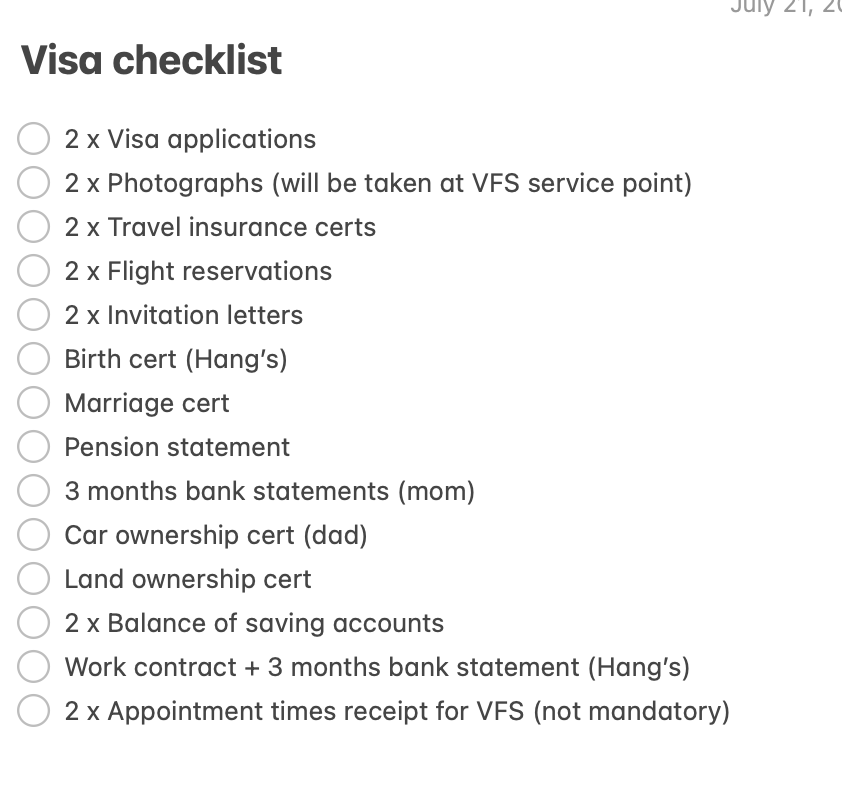
The visa handling process
So after all the documents are collected, translated and notarized, I booked appointments for my parents so they could go to the point of contact and provide their fingerprints (at VFS in Ho Chi Minh city). Appointment bookings for Vietnamese are done on VFS website. I booked 2 slots, one right after another for my parents.
After they had came to VFS service point in person to hand in their documents (including their passports) and provided fingerprints, about 2 weeks later their applications got to processing phase.
My mom got a phone call from the Finland Embassy in Vietnam. There was a Vietnamese woman acting as a translator. The Finnish person from the Embassy asked my mom a few questions such as:
- Who are you visiting in Finland?
- Where are you staying in Finland?
- Where do you get the funds to support yourself during the trip?
- How did you purchase your current assets? (house, car, etc...)
- Do you have any intentions of staying in Finland long-term?
My mom kind of answered the questions for my dad too so they didn't call my dad separately :D A tip: make sure you communicate with your parents clearly beforehand about what you wrote in the application, so that their answers match the info provided in the application. My impression is that even though I am the sponsor for the trip, the Embassy doesn't care about me or my financial situation at all. They only care about my parents' and tried to dive deep into their financial details and their ties with Vietnam.
About 3 days later, the Embassy called again to confirm the address and phone number of my parents, as they said they were about to send the passports back to my parents.
1 week later my parents received the passports with the Schengen visas stamping inside, yay!
Final words
I think the whole process was quite straightforward. The requirements were clearly written on all the official websites. The only hassle for my parents is translating and notarizing the necessary documents, as well as getting to VFS in person. The rest of the work could be done by me, remotely, from Finland.
Of course one could choose to use travel agency services for more convenience. But I hope by writing this guide, more people find it easier to invite their loved ones to visit Finland, it's a beautiful country <3
By the way, I made a video about my parents' trip in Helsinki, check it out: How my parents spent 2 weeks in Helsinki.
Cheers :)
If you find my content helpful, support me by buying me a boba:
https://ko-fi.com/hangmoon
https://buymeacoffee.com/hangmoon
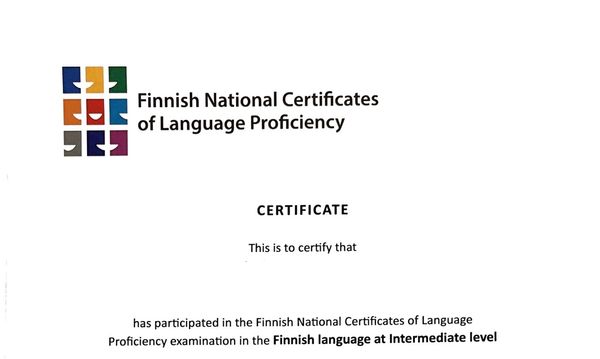
How I passed the Finnish Yki test at first try (for Finland citizenship application)
Hi everyone, it's been a long time since my last post. A lot has changed since then...Today, I will write and share with you my Finnish learning journey and how I passed the Yki test for Finland's citizenship at first try. It wasn't easy for me to study Finnish for an exam while working full-time. Looking back, it was a stressful 2-month intensive learning period.
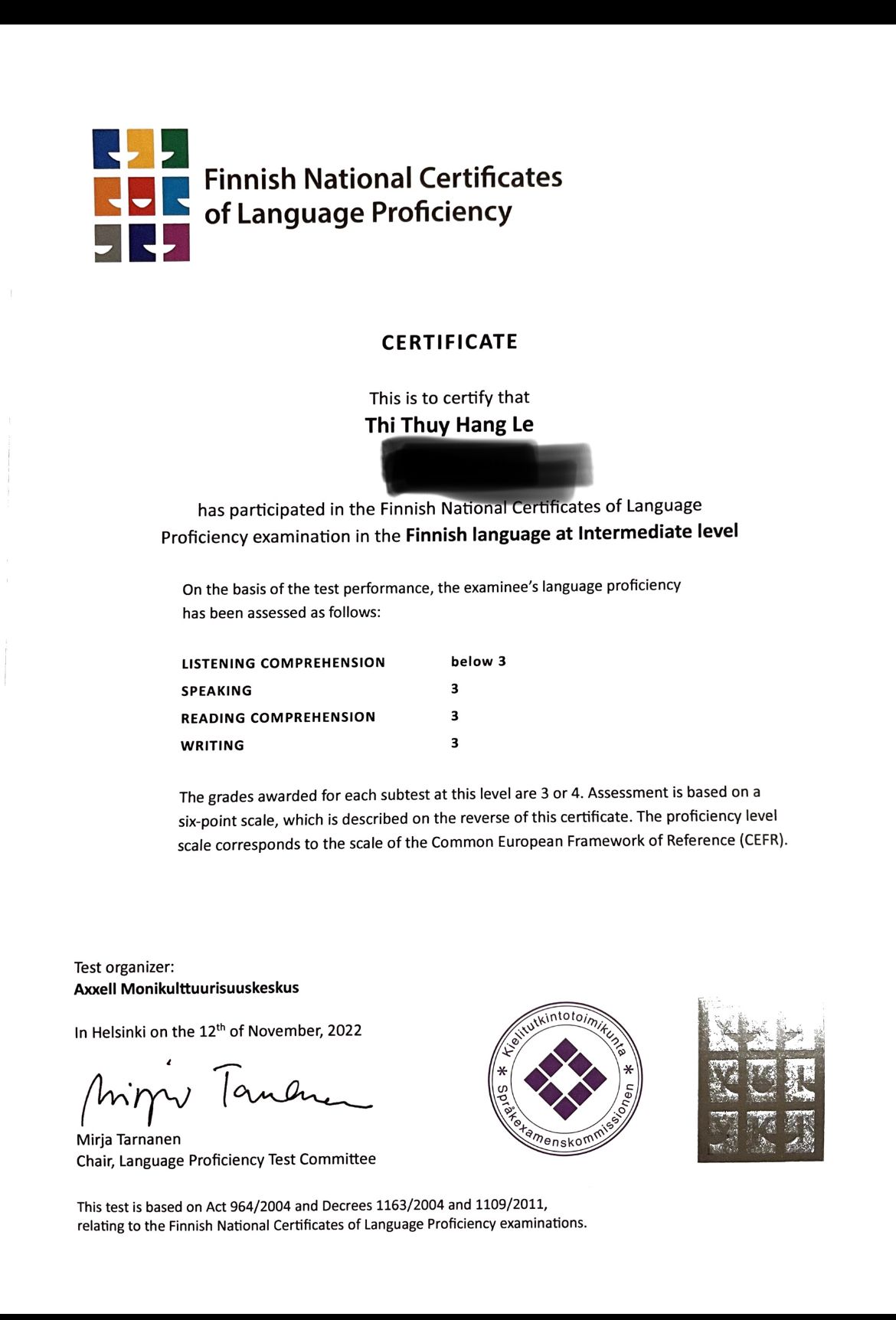
This post talks about my on-and-off learning progress throughout the 6 years I stayed in Finland, my YKI preparation and some tips on how to do the YKI exam.
My Finnish learning journey
I arrived in Finland in February 2017 to Kokkola. In the first semester of my Bachelor’s study that year, I took a Finnish course. The course was basic and covered Suomen Mestari 1 book, from chapter 1 to 6. I passed the course with good grades and had some fundamental knowledge about the Finnish language. Then I stopped studying Finnish completely there.
In the middle of 2018, after transferring my study to Turku, I signed up for an evening course to study Finnish, but I didn’t learn much from that course because it used a different book and covered more or less the same grammar points as the previous course. I didn’t attend all the classes and stopped soon after.
In 2021, after a long break, I picked up studying Finnish again. I signed up for an evening class in Helsinki, which I found through the website https://finnishcourses.fi/. The course ran from September 2021 to May 2022, starting from Suomen mestari 1 chapter 6 and ending at Suomen mestari 2 at chapter 3. The course was great, with a slow pace for solidifying basic grammar points, classmates for speaking practice, a nice teacher who explained things in both Finnish and English, and at a low cost of 150 euros for the whole year.
After the first course, I signed up for a second one that ran from September to December 2022 and aimed for the A2.2 level. This course covered the entire Suomen mestari 2 book, and was intensive, with classes every evening from Monday to Thursday lasting 3 hours daily. At the start of this course, in September, I decided to sign up for the YKI test. I took the test in November. Around this time the course was covering around chapter 6 in Suomen Mestari 2.
How I prepared for the YKI test
In May 2022, I downloaded and paid for WordDive - a Finnish application that helps learners with Finnish vocabulary. I preferred this app to Duolingo because the examples were more realistic and practical for Finnish daily life. I tried to learn new words with the app for 10-15 mins per day. I didn't study every day and didn't study at all during the summer, but the app was helpful when combined with the evening Finnish course.
After registering for the YKI test in September 2022, I signed up for a YKI intensive training course at Jyväskylä University. The course lasted for 1 month during October 2022. It was online, 3 times per week for 1.5 hours each time. The cost was 175 euros if I remember right. This course was helpful for familiarizing myself with the test format and the teacher gave tips on how to score well. Some tips I remember are:
- Don't leave any answers blank. Empty answers get minus points, while wrong answers don’t.
- In the Writing part, make sure you know the difference between formal and informal writing. Also, for the last question (argumentative writing), it is recommended to have 3 points to prove your statement.
- In the Speaking section, for the Dialogue part, just answer correctly and to the point. But for the Opinion part, try to fill the 2 minutes time and speak the whole time.
For Speaking, the one thing I did that I think was most important in helping me pass the YKI Speaking exam was this: I practiced speaking with a small group (4-5 people) almost every weekday, an hour each day, for a month before the exam date. We practiced using the book Ykäänkö vai ykiinkö. The practice was extremely helpful in a small group setting because we shared a lot of ideas with each other and also learned useful phrases together. We practiced with strict timer to make sure each speaking practice is according to the real time limit of the test. The one-month practice did wonders to my speaking skills. I learned to react in Finnish and think in Finnish. I believe without the consistent practice, I wouldn’t have been able to pass the Speaking exam.
For Writing, I didn’t practice any real writing with timing before the exam. I looked at examples from the book Harjoitus tekee mestarin 4. I also recommend the book Samalla Kartalla 1, which has simple and relevant texts related to YKI topics. I tried to read a chapter every night before bed for 2 weeks before the exam date. Additionally, this Youtube channel has a lot of useful writing samples that I've learned the ideas and writing structure from.
For Reading, I didn’t do any Selkouutiset or intentional training. I think by practicing speaking and reading the writing samples, my reading skill got improved in the process. The reading exam was quite long with a lot of texts. The way I did it was that I did the first 3 texts, then the last 3 texts that require written answers, then when there was only 10 minutes left I went to the middle texts to finish the Reading exam.
For Listening, as you can see, I didn’t pass, so I can't give any advice there. I think listening to more radio and getting used to spoken Finnish would help improve this skill.
Additional resources
These Facebook groups: Finnish YKI Test 2021 and YKI Test Practice and Apply for Finnish Citizenship. I found my speaking buddies from the first group. There's so much great advice and resources in these groups.
Make sure your friends and your network know you are preparing for YKI test. I've got so much support and materials from my friends. My friends lent me most of the books I mentioned above and gave me tons of useful advice from their own experiences.
Final words
So, that was the whole summary of my Finnish learning journey. Honestly, I started learning Finnish only with the intention of passing the YKI test. But after putting in so much effort, the result was actually better than what I expected. I can now use Finnish in supermarkets, coffee shops, or hold simple conversations with Finns. I finally understand the ad posters on the streets. After almost 6 years living in Finland, I slowly “get” what is going on around me and feel a little more “integrated”. I’d say that learning Finnish and taking the YKI test was definitely one of the most challenging things I’ve done, but the outcome was worth it.
Good luck on your Finnish learning journey! Let me know in the comments if you have any questions or if you want to share your learning experience with me :)
If you find my content helpful, support me by buying me a boba:
https://ko-fi.com/hangmoon
https://buymeacoffee.com/hangmoon

Personal Finance: How I spend my monthly salary in Finland
Like it or not, money plays an important part in our lives. I grew up without much knowledge about money or finance management. Studying abroad alone at 19 years old was the turning point that kind of "forced" me to educate myself financially. In this post, I will share with you my "pay yourself first" mentality that I have been following for the last few years in Finland.
Paying yourself first means when you receive your source of income, the spending should be in this order:
- Firstly: your fixed expenses
- Secondly: your investment and saving
- Finally: other purchases
1. Fixed expenses
So, what are fixed expenses? If you notice, every month you will have certain recurring payments. In Finland, the biggest piece of monthly expense is normally rent/mortgage. Besides accommodation costs, you also have to pay for utility costs (water, electricity, Internet, phone, etc..). Additionally, groceries costs are an irreplaceable expense. These costs are normally quite stable and predictable, in other words, they are fixed expenses.
In my own personal finance strategy, debt should be avoided as much as possible. This "pay your self first" mentality not only guarantees that I have shelter and food to sustain a functioning life but also helps me avoid attaining any debts. That is why the first thing I do after receiving my salary is to transfer this fixed amount of money to my spending account which I use to pay the above-mentioned costs.
2. Saving and investment
Emergency fund
After fixed expenses, the next thing I always do is to transfer money to my saving and investment account. As a general rule, everyone should stack up an emergency fund that can cover their 3-month living expenses. Let's say your monthly living cost in Finland is 1200 euros (1000 euros fixed expenses + 200 euros for unexpected expenses), then it is absolutely necessary for you to have a minimum emergency fund of 3600 euros. An emergency fund can be a saving bank account or an investment account that you could convert into cash quickly.
The reason an emergency fund is "mandatory" is because life is full of surprises. You never know when you may get laid off from your job, or your car suddenly breaks down, or you have a sudden illness that requires immediate treatment and your insurance won't pay the money upfront...In those unexpected cases, a cash cushion will come in handy and help you land gently from the crashes. This emergency fund will help you sleep better at night!
Investment account
After you have saved enough for the emergency fund, the next step is to educate yourself and start investing. A saving bank account is not a very good place to store your money at the time of writing this blog post, given the extremely low interest rate (0% interest rate in most banks in Finland). The inflation rate would quickly devalue your hard-earned money. This explains the need for each individual to learn about investing in order to preserve wealth.
As Einstein said: "Compound interest is the 8th wonder of the world", investing indeed holds immense money-generating power over a long period of time. There are many investment instruments out there. Warren Buffet suggested: "A low-cost index fund is the most sensible equity investment for the great majority of investors". For the average person who doesn't have a lot of time to do market research, index funds seem to be a safe bet. However, make sure you do your careful research before putting your money into any kind of investment! I currently don't feel confident enough to dwell on this investing topic. Hopefully, in the near future, I could write a blog post about my personal experience in investing in Finland :)
Below are some interesting reads that I find helpful to learn about investing in Finland:
3. Other purchases
After paying the above money (for yourself!), the leftover money is your guilt-free money. After the big chunks of fixed expenses and saving/investment money have been safely reserved, you can spend whatever there is left on the things you love. You could buy that dress, purchase that online course, eat in your favorite restaurant, or save for your holiday trip. I am sure I don't need to give you ideas on how to spend your money, this should be the easiest part for you :D
The best part about this "pay yourself first" mentality is that you are in total control of your money while still enjoying your life. Don't just save and forget living, but also don't just spend it all and regret it later.
So far this strategy has been working really well for me! It helps me set realistic financial goals and encourages me to live frugally.
Do you follow the same strategy? Do you have any great financial tips that you would like to share? Feel free to comment and let me know :)
Disclaimer: The information provided in this blog post is for educational purposes only and should not be interpreted as financial advice. The author disclaims responsibility and legal liability (for both authorized and unauthorized users) for any loss, harm, or damage, however caused, resulting from accessing any section of this website. Please consult your financial advisor before making any finance-related decisions.
If you find my content helpful, support me by buying me a boba:
https://ko-fi.com/hangmoon
https://buymeacoffee.com/hangmoon

How I found internships as a foreign student in Finland
Hello guys, it’s been a while since my last post. Today I want to share with you about how I found three internships as a foreign student in Finland.
I was a student at a University of Applied Sciences (UAS). My study program required three separate internships (also called practical training) before I was eligible for graduation. These internships are ranked in three levels: basic practice, field-specific practice, and professional practice. Ideally, these three internships should be in different places but it’s also okay if you do a long internship in one workplace and earn the 30 mandatory credits there. For me, it was the first case where I went to 3 different workplaces.

1. Basic Practice
I participated in a lot of hackathons and events from my school (TUAS) and other organizations in the city during my time there. The events were most of the time very well-organized, interesting, and best of all, free. There was this one hackathon called Challenge Turku Goes Green. Its topic was Circular Economy. The event was filled with challenging but intriguing questions for several teams to tackle. After it was over, I reached out to the teacher who was the main organizer. I remember asking her something like: “I am very interested in this Circular Economy topic and I would love to get further involved. Is there anything I can help you with?”
The teacher was so kind. Unexpectedly, she told me I could do an internship at the Circular Economy campus and earned credits. It turned out that there was a whole research group about this topic. That’s how I got my first internship. It was unpaid, but the study credits and the experiences I gained there were so worth it. On top of that, I got a much more in-depth understanding of Circular Economy, which was what motivated me in the first place. At the end of my internship, I even got a chance to join a two-week intensive course about Circular Economy with numerous exciting outdoor activities, at no cost. The course was one of the best memories I got during the whole practical training period.
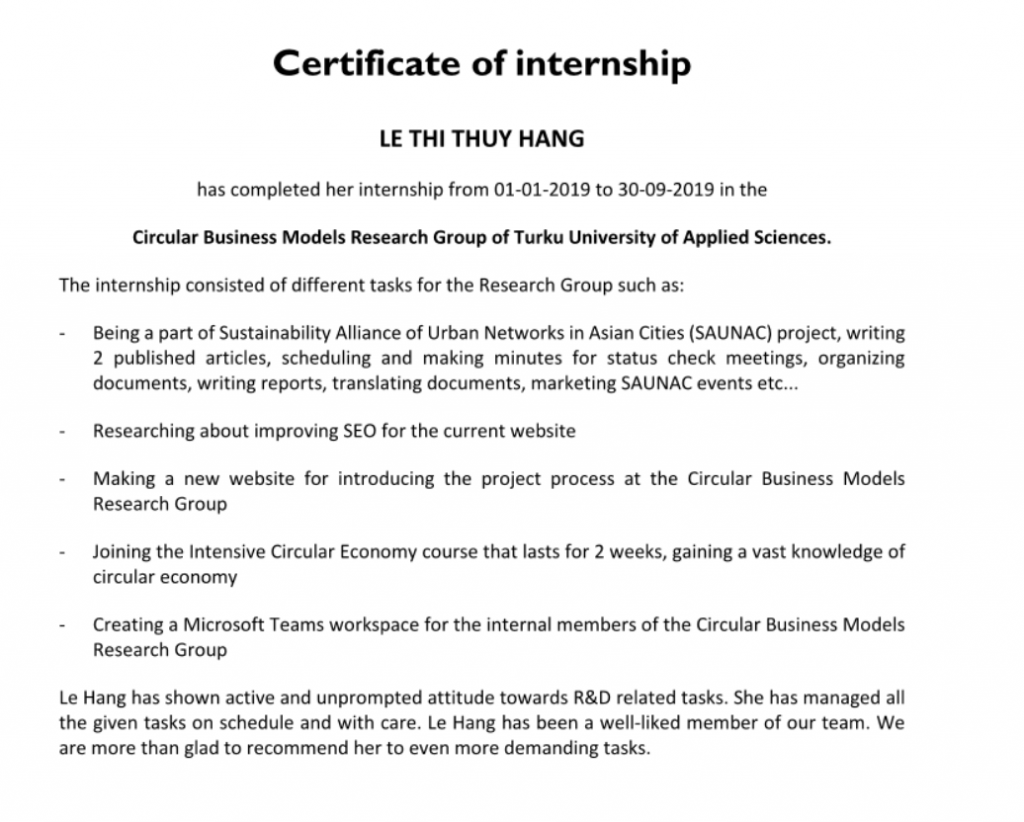
2. Field-Specific Practice
Most Finnish universities have exchange study programs available. Schools strongly encourage their students to go on an exchange. The benefits of an exchange study should be obvious. You get to see a new culture, learn to speak a new language, experience something entirely different at the comforting thought that the trip will only last 3 months, so if it doesn’t live up to your expectations, you can always go back 😉
If you look a little more carefully, you may find out that there are exchange practical training opportunities as well. So instead of going to another country to study, you go there to gain working experience, while also getting to experience all the above benefits. Sometimes you could even get a paid internship! Make sure you talk with your school’s advisor to find out if some programs like this exist, also apply early!
In my case, I went to Japan for three beautiful spring-summer months for my internship. I didn’t get paid directly for my work, but I got a scholarship worth 80 000 yen per month (around 650 euros at that time) from the government. It was more than enough for me to live in Japan because the living cost was very cheap there thanks to the school’s dormitory. I had to pay only around 120 euros/month for accommodation and lunch. You can check out my blog post to get more information about how to prepare for an exchange trip to Japan.
My tasks were about building a web application using my existing skills set, so it totally matched my study major (I was an ICT student). My supervisor was so nice and helpful. He guided me to work in the right direction while also making sure to give me tasks that I found interesting. The whole process was pretty easy and enjoyable. The best part about this internship, needless to say, was the weekends and the traveling parts where I got to explore Japan! It was such a beautiful experience that I have many times dreamt of going there again 🙂 And of course, it also earned me an additional 15 study credits.
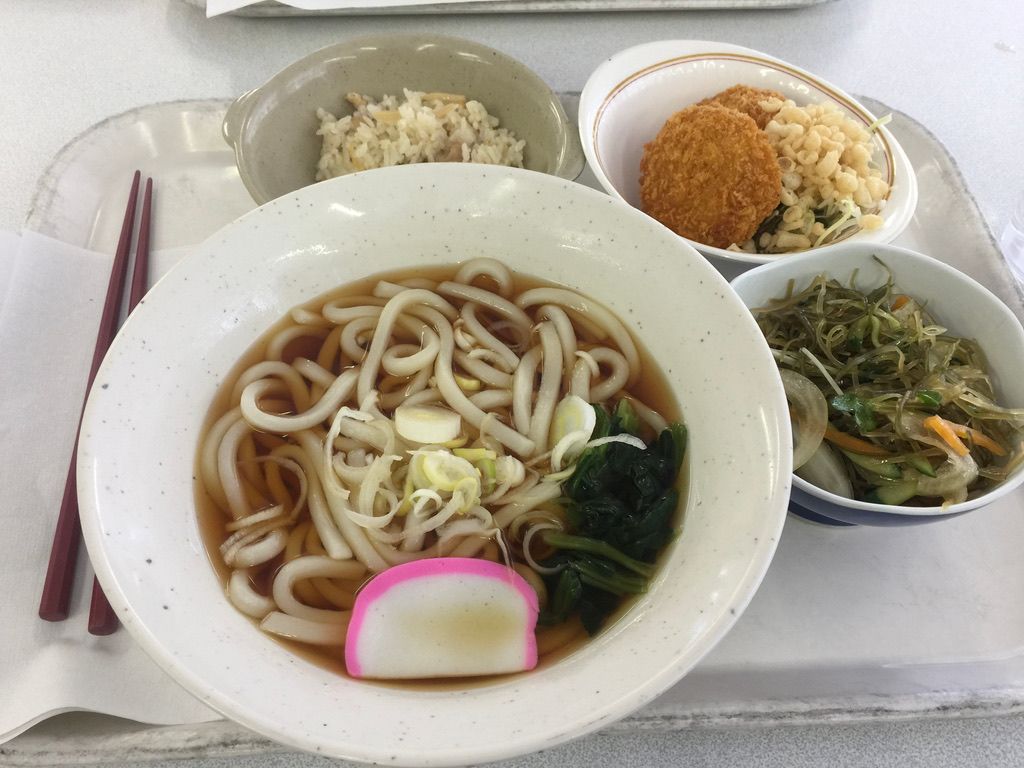
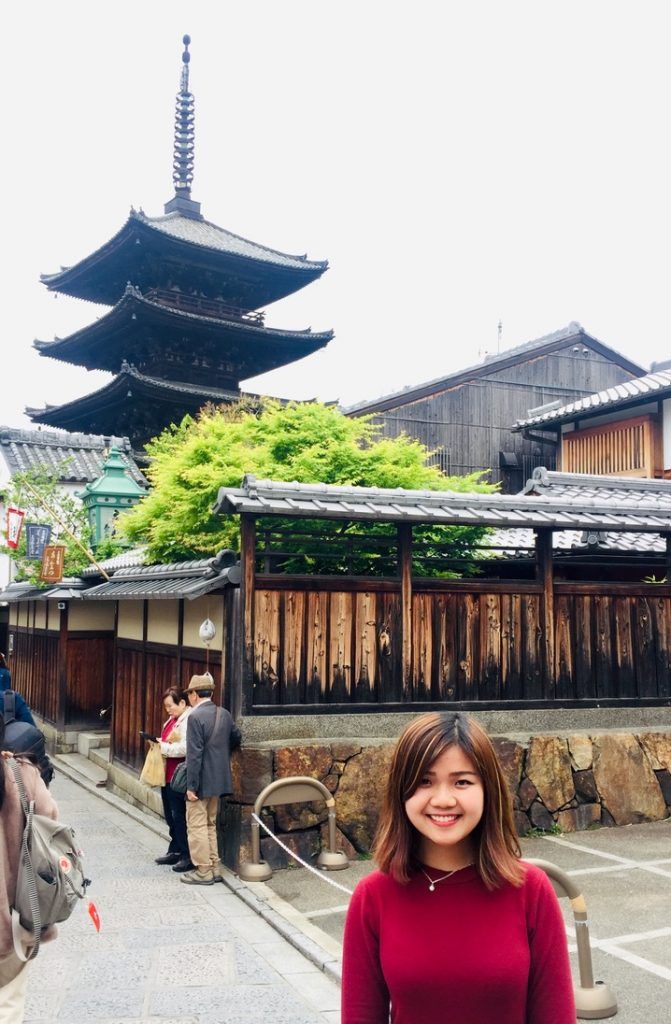
3. Professional Practice
For professional practice, my goal was to work in a real company where I would have a chance to work on real-life projects. I started with making a portfolio that showcases my projects, both from school and from my personal free time. Then I applied to all the junior positions I found on LinkedIn. Or any position that didn’t have the “senior” word in their job title, to be more accurate 🙂 I think I sent around 40-50 applications until I got my first interview.
The interview happened while I was still in Japan, in the middle of my second internship. I didn’t hear back from the company until one month later. It turned out they had already found a person suitable for the position that I applied for, but they liked my enthusiasm during the interview so they offered me a trainee position to write my thesis at their company. I happily took the offer. If you want to know how I felt after working there for half a year, check out my other blog post where I wrote about my experience in working in a Finnish company 🙂 The internship turned into a full-time job offer 6 months later. It has been an incredible journey where I’ve been learning new things every single day from my lovely colleagues.
4. Conclusion
I graduated half a year earlier than the scheduled study time, largely thanks to my early initiatives to find internships and finish them quickly. These internships also sharpen my professional skills significantly while connecting me with wonderful people along the way. If there is one takeaway from this post, it should be: Don’t be shy to ask. You’ll never know unless you try.
Good luck with finding your dream internships! 🙂
If you find my content helpful, support me by buying me a boba:
https://ko-fi.com/hangmoon
https://buymeacoffee.com/hangmoon
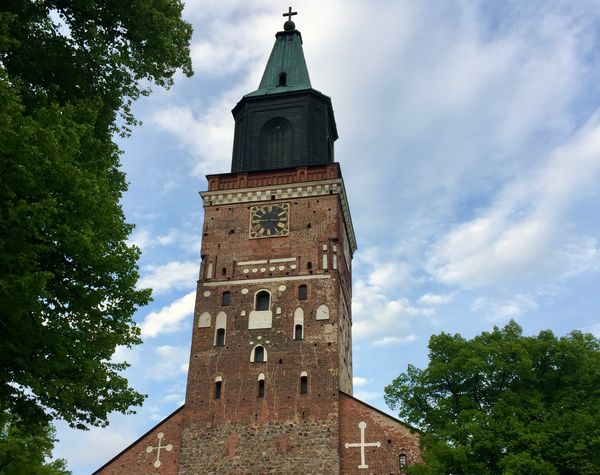
How to spend one day in Turku
I lived in Turku for 1.5 years before I moved to Helsinki. Turku is a lovely city with a lot to offer, from beautiful sceneries to stories about its rich history. In this post, I will share with you my own ideas about a one-day Turku tour. For me personally, the ideal time to visit Turku is in the summer. Therefore, this post will be best applied on a sunny summer day 🙂 All photos used in this post were taken by me.
Turku Cathedral
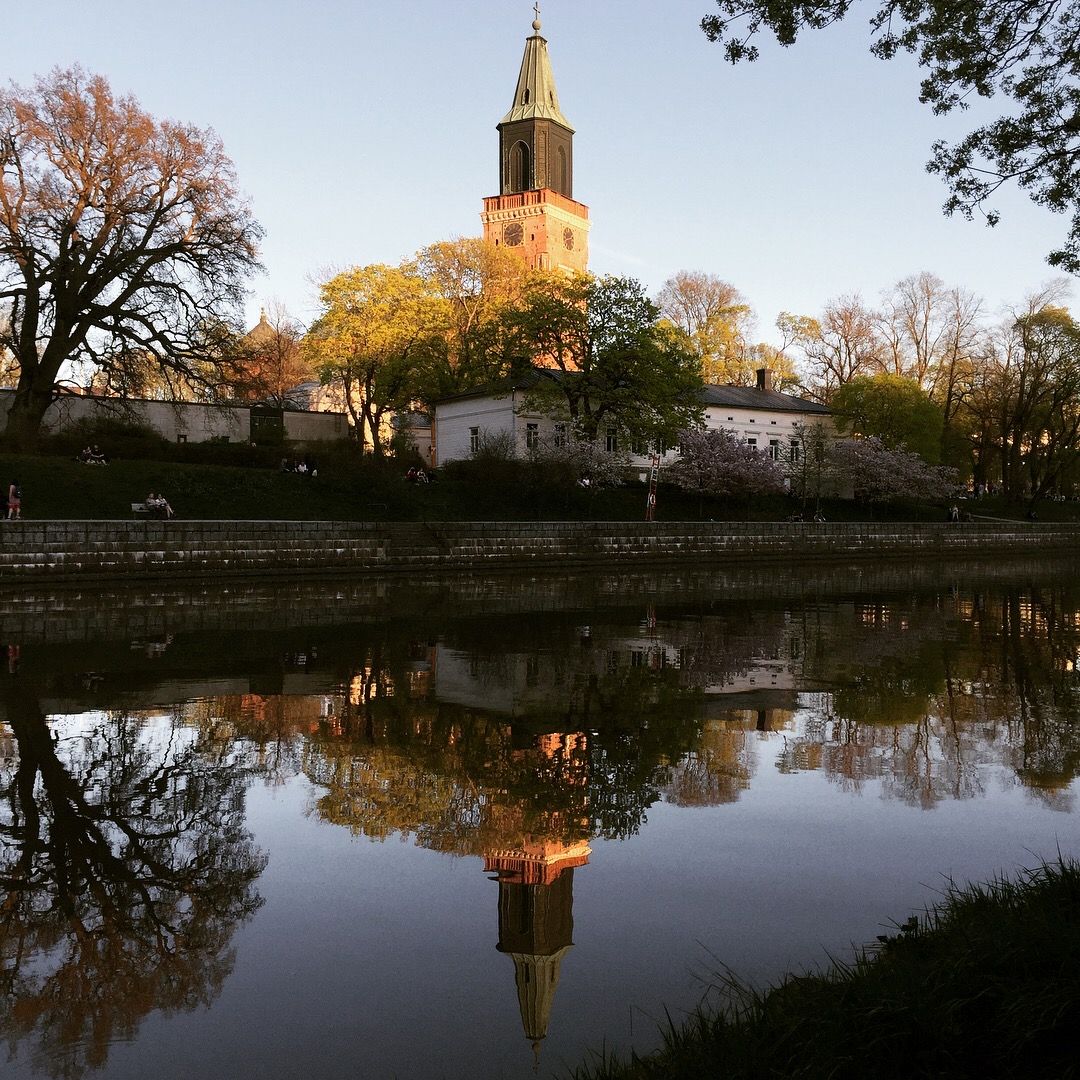
Located at the heart of the city, Turku Cathedral must be one of the most iconic symbols of Turku. It’s big, gorgeous and placed right next to the old square. This could be a perfect starting point and check-in place for your one-day tour. The cathedral was built in the 13th century, and from then it has witnessed a lot of ups and downs happening in Turku. The inside of the church is impressive. The church is open from 9am to 6pm every day, and it is free to get inside. There is a museum upstairs with a small admission fee (1 euro for students and 2 euros for adults). The museum shows a lot of interesting ancient church-related things. Although there are no English descriptions for the items, the museum’s definitely worth taking a look.

Aboa Vetus And Ars Nova
Aboa Vetus and Ars Nova is a museum located right opposite the Cathedral. Look across the street and you’ll see a big pink museum. So after visiting the cathedral, this should be your next stop. I highly recommend this place not only because of the artwork it has to offer but also for the interesting history lessons from the underground floor. The admission fee is 8 euros for students and 11 euros for adults. You should spend around 1-2 hours there.

Aura River
So assuming you are done with the above two destinations and have already had something delicious for lunch (if you are interested in what to eat in Turku, I can write another post about this topic), your next activity should be walking along the river that runs through the city. The best way to get the “Turku vibes” is to take a long walk along the waterside, then see and feel how the locals live. There are a lot of bridges on the way. At night time you will see them lit up in colorful lights. You should definitely walk on the bridges, and see the river as well as the city from a different angle.
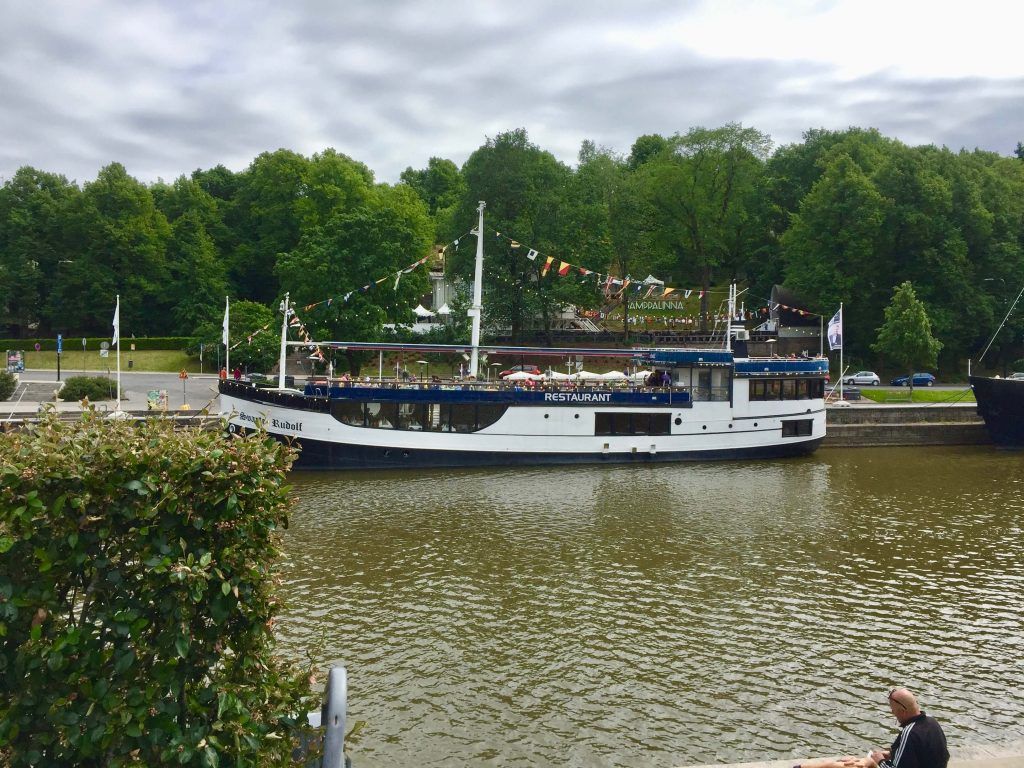
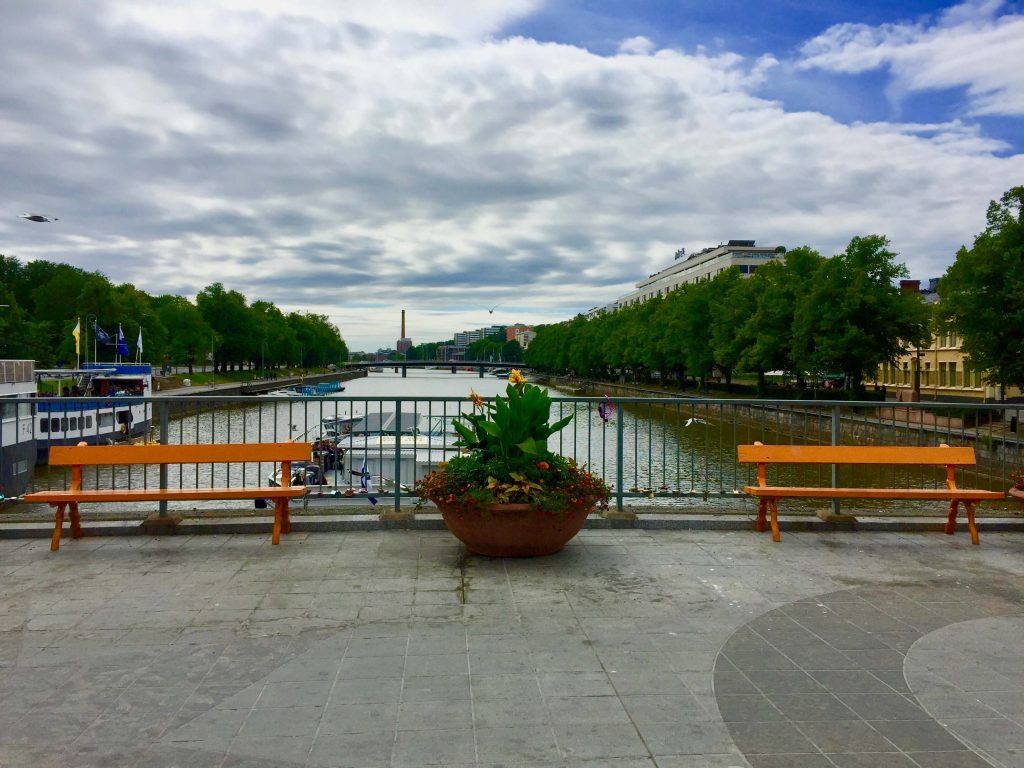
Turku Castle
Turku castle is one of the most popular destinations of Turku. The castle is visible even from a long distance. It’s located near the harbor of Turku. It was also built in the late 13th century. During the course of history, it has served several roles, from a defensive fortress to prison and more. While you are inside the castle, don’t forget to put on some beautiful medieval clothes and take some fun pictures with them 🙂
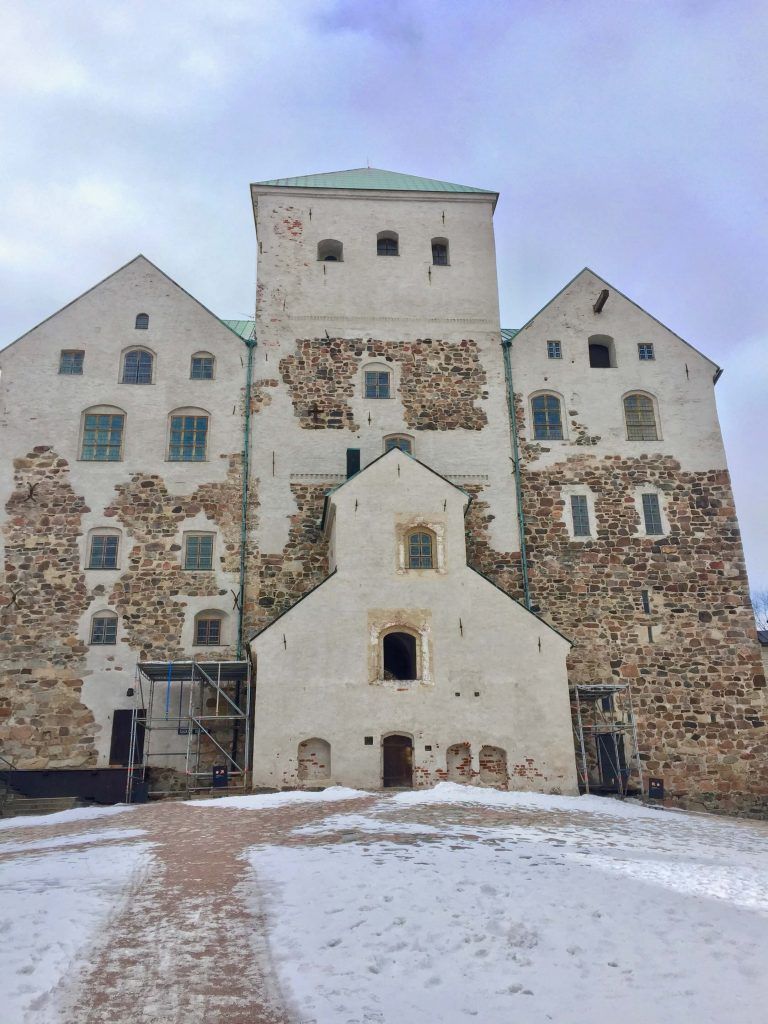
Ispoinen Beach
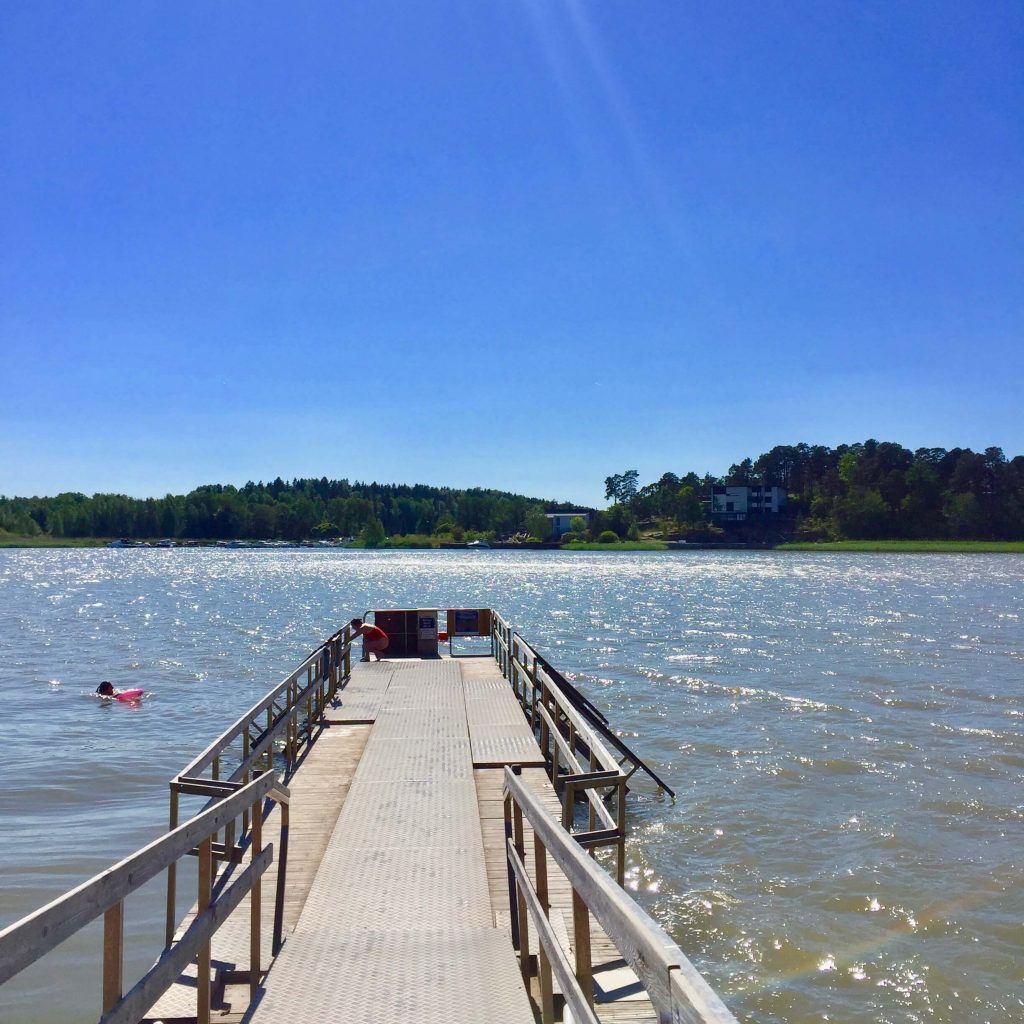
This is the last destination of our one-day tour in Turku. After taking a bus to the center from the castle (bus number 1), you can then take bus 13 from the center to Ispoinen. The beach is not too far away, it will take only about 20 minutes from the center. This is my most favorite beach in Turku. It feels like a hidden gem to me because it’s breathtakingly charming and set at a good distance yet never too crowded. My most favorite activity every time I visit this beach is to climb up the highest rock and enjoy the view from up there. If you go with a group, remember to bring some board games to play with your friends while enjoying the view. If you want to swim, this is also a great place to get in the water.
Being with the beach brings me peace, so I hope this last destination will give you some rest after a long day full of different activities. And as stated at the beginning of this post, this one-day tour will only work on a perfect sunny summer day. In the summer the sun doesn’t set until around 11pm. So you got all the sunlight to enjoy everything I’ve listed above 😉
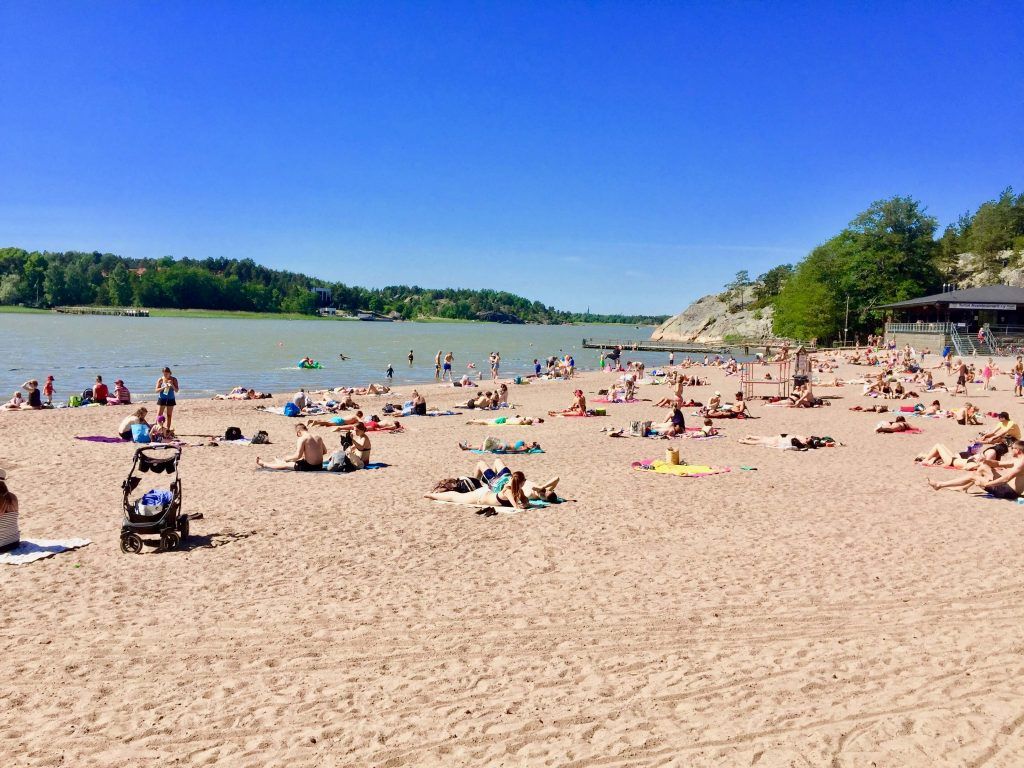
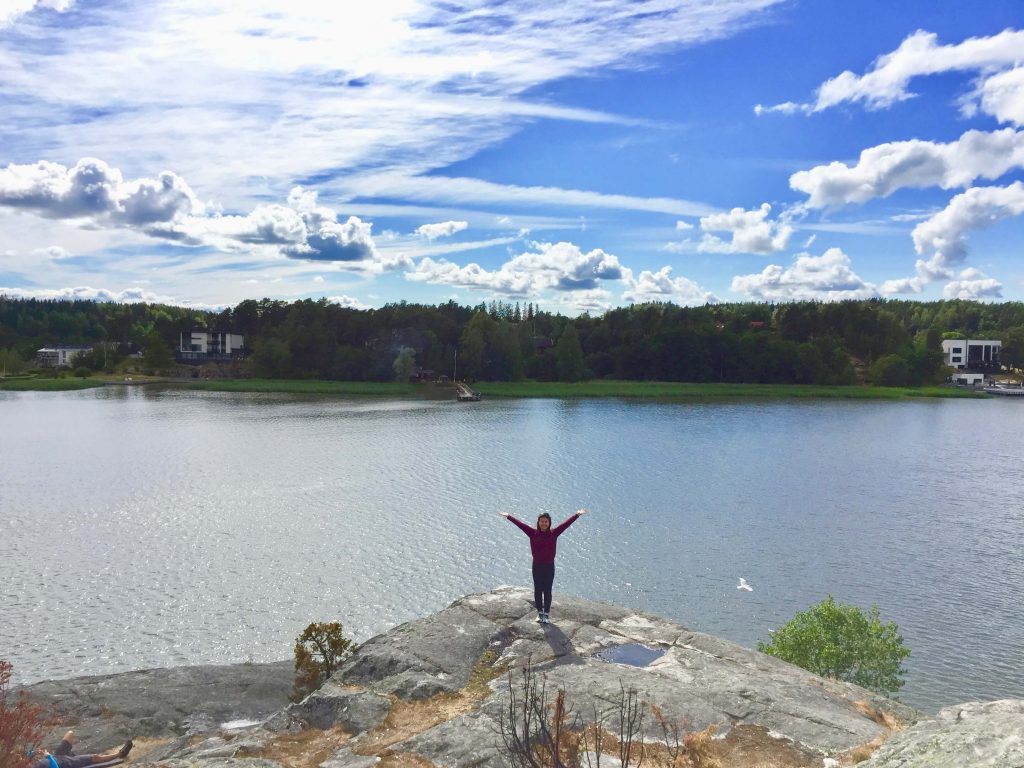
I hope this post gives you some ideas about what to do when you visit Turku. I hope after the pandemic is over, many of you will have the chance to visit Turku and try out my one-day tour suggestion 😉
Take care!
If you find my content helpful, support me by buying me a boba:
https://ko-fi.com/hangmoon
https://buymeacoffee.com/hangmoon

Living cost in Finland: Is it expensive to live in Finland? (for students and non-students)
Finland is a country in the Nordics, a region famous for its high living standards and also its high living costs. After living in Finland for almost 4 years with and without student benefits, I think I've had a fairly good idea about how the living costs are like. In this blog post, I will share with you my own experiences and observations about costs in Finland.
A good thing to know about Finland is that different cities will have different prices, depending on how big the city is. I've lived in 3 different cities in Finland: Kokkola - a small city in the middle part of Finland, Turku - the third biggest city by population, and Helsinki - the capital of Finland as well as the most expensive city in the country. In this post, I'll try to break down the prices into 2 categories: student and non-student.
Accommodation
Student
If you are a student, the first thing you should do after being accepted to your school is to apply for a student apartment. The rent for a student apartment is substantially cheaper than a similar one from the market.
For example, in Kokkola the cost of a room in a shared apartment would be around €280 - €350. In Turku, I paid €250 for my TYS room in a 3-bedroom shared apartment. In Helsinki, my HOAS room in a shared apartment costs €264. For those who don't know, a shared apartment means that you and some other people will live in the same apartment. You have your own bedroom, but you will share common areas like the kitchen or toilets. If you don't like the idea of sharing your apartment with someone else, there are also single apartments/ studios that allow you to live alone. The cost is a little higher, around €300 - €500 for such an apartment. To get a better idea about how student apartments look like, you can visit HOAS (The Foundation for Student Housing in the Helsinki Region) for example.
Non-student
After graduating, I moved out of the student house. In Helsinki, rent is considerably more expensive than in other parts of Finland. The average rent price was €20.3/m² in Helsinki in 2019, while that of Tampere was 14.7€ /m² or Turku's was 13.7€/m² (source here). It is quite competitive to get a "good" apartment in Helsinki (aka good price, good location, and good condition) because the demand is high in the capital region. If you are interested in searching for an apartment in Helsinki, I would recommend Oikotie (only in Finnish though, use Google Translate if needed) and Vuokraovi.
Utility costs
Student
A great thing about student apartments is that all utility costs (water, electricity, Internet) are covered in your rent. If you are a student and you get a student apartment, your utility costs are basically zero.
Non-student
If you are no longer a student, it's gonna cost you a little extra. Utility costs include electricity, water, Internet,...
If you live in an apartment in a block, then your electricity bill should not be too high because the heating costs are covered by district heating. If you live in Helsinki, then your electricity bills have 2 parts: the electricity you consumed provided by the company of your choice (for example Helen, Fortum, Lumo, Energia 247...), and the transfer fee for this electricity (distributed by Helen). You can compare the best prices for electricity using this website, but remember to read the terms and conditions carefully because sometimes the cheapest offers have some catch (for example the cheap offer is only valid for the first 2 months, etc.). Depending on your usage and how big your apartment is, the electricity bill may vary from €20 - €60/month.
Water costs are sometimes included in the rent price. But most of the time from what I have seen, water costs are agreed in the contract as a fixed cost per person monthly. For example, an apartment may cost €1000/month for rent and €20/person for water. If there are 2 people living in that apartment, you will pay a fixed amount of €1000 + €20*2 = €1040 monthly to your landlord. Water costs fluctuate from €10 - €30/person/month.
For Internet cost, remember to check with your building's manager to see if there is any Internet provider already. Because most of the time, a building will already have an Internet connection for free, however with slow speed Internet. If you want to upgrade your Internet connection, you can often get a good deal from the same Internet provider that is operating in your building. Popular providers are DNA, Elisa, Telia,... Depending on your choice, Internet costs may vary from €10 - €40/month.
Transportation
Student
In big cities, public transport is available at a reasonable cost. For students, you will have a student discount. For example, in Turku, I paid €33/ month for my Föli bus card. In Helsinki as a student, I paid around €31/ month for zone A-B (45% discount for students).
Non-student
If you are no longer a student, you will pay the full price of €65.3/month for zone A-B in Helsinki (Updated Jan 5th, 2022). For more information about ticket prices, you can check HSL website.
Food costs
Student
The university cafeterias offer student meals (most often lunches) for a good price. During my student time, I paid €2.6 per meal. Student meal in my opinion is a quick and convenient option while still providing nutritious food. The meal has carbs, protein, salad, and a drink included in the price. You need a valid student card to get this student meal.
Non-student
Finland's food price is quite expensive compared to where I come from. To have an overview, you can take a look here.
On average I spend around €250 - €300 for grocery shopping monthly. Eating out costs me around €150 - €200 more. A tip for eating out in Finland is that most restaurants offer a cheaper lunch price which is around €10 - €15 per dish. This is a great deal because for dinner it would cost €5 - €10 more for the same dish.
Other costs
Student
The most outstanding cost for students should be insurance because as a foreign student, I didn't get much support from the public health system. Health insurance cost me around €200/year back then.
Non-student
There are other costs apart from the basic ones listed above. One of the most important costs is insurance. I bought home insurance for around €100 per year. I also took unemployment insurance from YTK for €110/year. If you are not a student anymore, you can rely on the public health care system if you have Kela (free, but the waiting time can be long until you get an appointment).
Overall, living in Finland would cost around €600 - €800/month for a student, and €800 - €1500/month for a simple adult (like me :D). I hope this post gave you a better idea of how much it would cost to live in Finland. Comment below if you have any questions, or if you just want to share your thoughts with me :)
Cheers!
If you find my content helpful, support me by buying me a boba:
https://ko-fi.com/hangmoon
https://buymeacoffee.com/hangmoon

3 relationship books everyone should read
One of my favorite free-time activities is reading, and one of my favorite topics to read about is relationships. After reading a bunch of books about relationships, I would like to recommend the 3 following books that I think everyone should read. These books, based on my personal opinion, can help you choose a suitable partner. Besides, they teach you to behave reasonably in a relationship.
1. Men are from Mars - Women are from Venus (John Gray)
This book always comes first in my recommendation list for my friends and family, or for anyone who asks me about relationship advice.
The reason for that is because this book explains in great detail about the fundamental differences in biology as well as psychology between men and women. There are a lot of obvious differences that are easy to relate to in everyday life. However, because some people do not have knowledge about these differences, so often they would go against the rules of nature and end up upsetting their partner.
After reading this book, everyone will understand the basic needs of each "planet". For example, men and women have different needs. Women need caring, understanding, respect, devotion, validation, and reassurance. On the other hand, men want trust, acceptance, appreciation, admiration, approval, and encouragement.
Each of these needs will be explained in detail in the book.
2. Act like a lady, think like a man (Steve Harvey)
This book is especially recommended for ladies, men can skip this one :))
Written by the famous comedian Steve Harvey, this book is an easy read with some good laughs in between. The values and tips the book brings are definitely worth considering.
From the viewpoint of a man, the author wrote this book hoping that his daughter will read it and understand what a man really wants when he starts a relationship with her.
One of the great tips from this book that I think is worth sharing is the 5 questions any girl should ask before getting in too deep with a potential long-term partner:
- What are your short-term goals?
- What are your long-term goals?
- What are your views on relationships?
- What do you think about me?
- How do you feel about me?
3. Attached: The New Science of Adult Attachment and How It Can Help You Find - and Keep - Love (Amir Levine, Rachel S. F. Heller)
I didn't read a paper version of this book, I listened to it on Audible.
After listening to the book, I found out that there are 3 main types of people in this world:
- The Secure: takes up about 50% of the population
- The Anxious: takes up about 21% of the population
- The Avoidant: takes up about 25% of the population
The last type and a rare type is Disorganized, which will not be discussed in the book.
The book points out that there is no good or bad type, we should embrace who we are. However, we should make conscious efforts to lean towards the Secure type because it's the most fulfilling and sustainable type of attachment.
Couples made up by Secure types are normally the happiest ones with the least drama in their relationship. The reason is because they are secure with themselves and with their partner, thus their communication is more efficient. Moreover, they can freely discuss their opinions as well as their wants and needs in the relationship.
A lot of other couples are made up as a combination of one Anxious and one Avoidant. Like opposite magnets, they attract each other. To recognize these types, some examples are:
- The Anxious: crave closeness and intimacy, get insecure super easily, call repeatedly to check on his/her partner, play the distant game as a punishment to their partner when he or she feels insecure.
- The Avoidant: not willing to commit, not comfortable with closeness, try to push the partner away when sensing things are getting too close, focus on their partner's flaws to make them less attractive. However, after an Avoidant breaks up with his/her partner, he/she will fantasize about the ex and have a desire to be back with their ex.
This book suggests great strategies for the Anxious to be less anxious and the Avoidant to be less avoidant, which brings them both closer to being a Secure type.
After finishing this book, my biggest takeaway is: Don't try to stay in a bad relationship and think you can change someone. You can’t. And you shouldn’t.
One minute of advertising: If you want to listen to this book on Audible, use my link for a 30-day free trial. In these 30 days, you can purchase 2 books for free on Audible, as well as one free Audible original book ;)
I hope my sharing was helpful :) If you have read any of these books or have recommendations about books in the same topic, feel free to let me know in the comments :)
If you find my content helpful, support me by buying me a boba:
https://ko-fi.com/hangmoon
https://buymeacoffee.com/hangmoon

How I got a 100% Master's scholarship from Aalto University
Aalto University is a well-known university in Finland (and probably even in Europe), thanks to the good reputation and its high ranking. I applied for the Master's program in International Design Business Management (IDBM) and was granted a 100% tuition-fee waiver scholarship, which means that I would save 30 000€ and pay 0 euro to study Master's for 2 years at Aalto. In this blog post, I will share with you how I applied for the Master's program and the scholarship. This post will hopefully be helpful for students who come from outside of Europe and are required to pay a tuition fee to study in Finland.
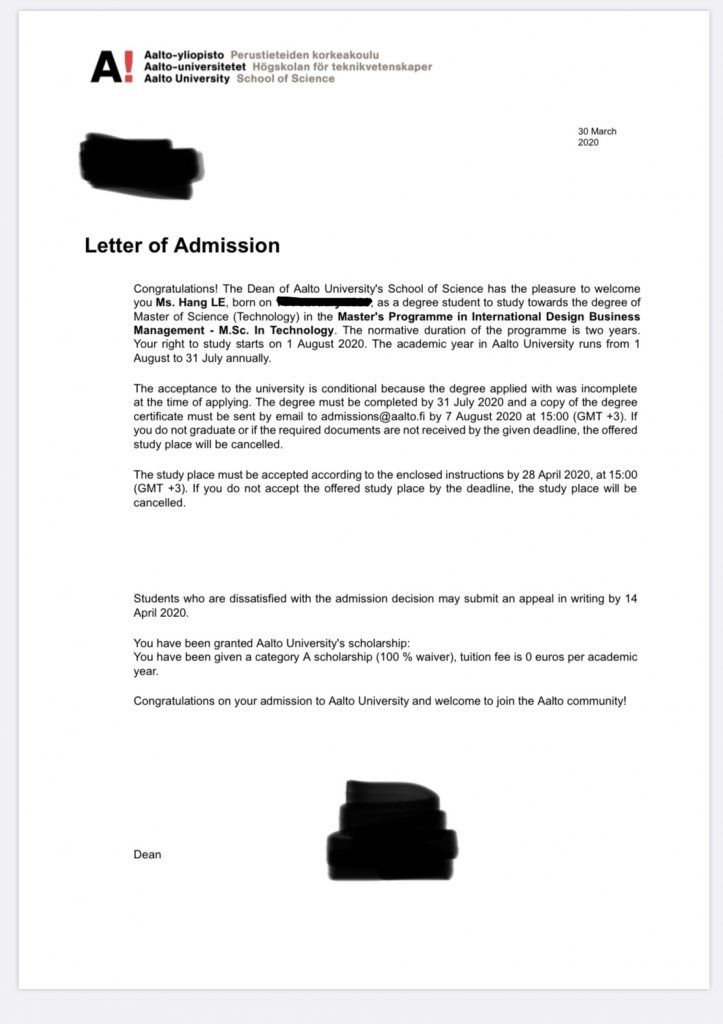
Some facts first: My program honestly didn't seem too competitive to get in this year (statistics here). Another thing is that in this year 2020 I will not take this scholarship and study the graduate program because of personal reasons. I already sent an email to Aalto explaining that I would not be able to proceed with my admission and the scholarship should be passed on for the next person in line. I do hope to have a chance to be a student at Aalto in the future years though.
Disclaimer: First of all, about the process, I will write about my own experience in the IDBM program only. The process may change each year, it totally depends on the university. Secondly, all opinions in this post are just my own personal opinions.
Okay, let's get started :)
When to apply?
Each university will have a different time period for taking in applications. Generally, December is the most popular time for universities to get their application period open. On the university's website, there is clear instruction about the application time and the required documents.
What is in your application?
For Aalto, you need to use studyinfo.fi to submit your application.
Remember to submit all the required documents from the degree you are applying to. For IDBM program I had to submit:
- Degree certificate
- Transcript of study records
- Motivation letter
- CV
In my case, I submitted my high school diploma, because at the time of applying, I hadn't graduated from my school yet, so I didn't have a Bachelor's degree yet. But that was not a problem, Aalto will still consider your application normally and if you are accepted, you will need to submit your official Bachelor's degree before the end of August. I didn't even start working on my thesis back then, so I wrote "Not defined yet" when I came to the part "Title of thesis / final project" :D
What to focus on in your application?
There was a part in the application form that asked about "Cumulative grade point average" - your GPA. Therefore, I do believe that your GPA does matter. While doing your Bachelor's, don't underestimate those tests that you may have thought "It's just a test, I only have to study just enough to pass it. I'll graduate anyway and just get a job with my degree. Who cares about grades anymore?" Well, graduate schools seem to do so. If you want to further your academic journey, I think paying attention to your GPA will pay back in the end. Plus, having a good GPA doesn't hurt, ever. I personally think that a good GPA shows that whatever you are doing, you always do it seriously, with your best efforts, even if it's just some school tests. For reference, my GPA at the time of applying for this Master's program was 4.56/5.
The second obvious thing that may help you stand out in a pool of applicants is your motivation letter. Through this letter, the admission staff will get a better picture of you through the word choices you made. They will see you closer as a human being, who has different passions, achievements, dreams and on top of all, a burning desire to be admitted to their university's Master's program :D
In this letter, you can write with your own style, but these parts should be included, at least for IDBM program:
- Reasons why you want to study the program
- Expectations for the program at Aalto
- What you will specialize in if you are admitted
- What you will contribute to the school and to your fellow students if you are admitted
Try to write your motivation letter as soon as possible, don't wait until it's close to the deadline because for a motivation letter to be good, it needs to be edited several times. Speaking from experience, you should reserve at least 1 week just for the motivation letter. After you write it, leave it there, go to sleep and read it again tomorrow. When your mind is refreshed, you'll find many things that can be fixed. Ask your close friends, your family, or whoever you trust to read it and give you constructive feedback to make it even better. This letter is important, I want to repeat. It will be the ticket to get you to the next round.
For the scholarship, if you are a student who comes from outside of Europe, you will tick an option like this in the application:

That's it. Your application for the scholarship is just as easy as a click. You will then be considered for the scholarships. There are 2 types of scholarships at Aalto: 50% and 100% tuition-fee. There are currently no scholarships that cover your living costs. More information here.
After applying, what's next?
Depending on the program you applied for, there will or will not be a second round.
For my IDBM program, I had to go through the second round, which was a 15-minute interview. I was informed one week beforehand and was given a topic to prepare for. My topic was "How can design make a difference?”. I was required to prepare a 5-minute verbal presentation about this topic.
So I wrote about the topic, memorized it, and practiced in front of the mirror 4-5 times before the interview date. I put in serious time and effort because I was aware that this 5-minute presentation would be the first impression I made on the interviewers. My tips are that when you practice, set a timer, turn on your voice recorder and only speak within the allowed amount of time. By listening to your own performance, you'll find out your faults, your repeated Uhm/Ah, your unnecessary details, etc. After a few tries, you'll find the most suitable speech content as well as the perfect speaking speed.
After I gave the presentation, the interviewers asked me just this one question: Why do I want to study this program at Aalto? I pretty much repeated what I said in my motivation letter, but this time with intense eye contacts and some hand gestures to show my enthusiasm :D
The results
The results were released on 31st March, both the scholarship and admission results were in one email. This email also included further instructions on how to accept the scholarship and the next steps.
Conclusion
I hope my sharing about the process of getting a Master's scholarship at Aalto was helpful. It was a nice journey. The process was smooth, Aalto admission staff was very friendly and responsive. If you are planning to study Master's at Aalto, all the best to you :)
Comment below if you have any questions, or if you just want to share your thoughts with me :)
Cheers :D
If you find my content helpful, support me by buying me a boba:
https://ko-fi.com/hangmoon
https://buymeacoffee.com/hangmoon

How is it like to work in a Finnish company?
I've been working in a Finnish company for the past 7 months as a trainee. The time I spent there is not exactly long, but long enough for me to have some humble opinions about how it is like for a foreigner to work in a Finnish company. This blog post is entirely based on my personal perspective. Here is what I have learned about working in a Finnish company:
The benefits
Finnish company's benefits are incredible. Even though I haven't worked in a real company anywhere else, I am absolutely amazed by how much an employee gains from working in a Finnish company. I am not sure if all companies in Finland are the same, but at least at the one I've been at, I got tons of benefits:
- Devices: I got an iPhone 11 pro from the company as my work phone. Actually, they gave me a list of phones that I could choose from, one week before my first day at work. When I told my supervisor that my Windows computer is too slow and I would like an iMac, I got the newest model after 2 weeks!
- Lunch benefit: 25% of my lunch's price is paid by the employer (however it has to be < 10.7 euros). Oh, the company has a chef as well, which means I can have lunch right inside the company without having to go anywhere.
- Health care: I get private health care which I have used very often. They have an app that offers digital healthcare advice, which I can consult before I decide to make an appointment to see a real doctor. All for free.
- Travel insurance: Yes I get that too.
- Well-being and recreational benefit: Each year, an employee gets 400 euros to spend on well-being related activities (gym, movie tickets, museums, theater, dance classes...)
- Massages: I can have massages at the office for 0.5 - 1 hour because a masseuse comes to the office every 2 weeks.
- Other activities: The company organizes Yoga classes, Christmas party, Teams building party, Finnish classes for international employees... They always collect feedback about these activities and listen to the employees' wishes. I even got a device that measured my heartbeat for 3 days consecutively. After that, a professional called me to give me explanations about my heartbeat report and gave me advice on how I could improve my health based on the report.
- Cakes: This one is special to me so it deserves a whole bullet point. We have cakes every Friday at the company where everyone can sit down, enjoy the cake with tea/coffee, and talk with other colleagues.
The work-life balance
I have to work 37.5 hours/week, which is 7.5 hours per day. I can choose when I go to work, as long as it is before 10am because they have a flexible working hour policy.
Each year I have 4-week paid holiday.
Because I am working in the IT sector, I have a chance to work remotely if I wish to. I didn't really do it though, until the pandemic happened. The reason was because I liked working at the office where I had a table that I could adjust its height, and a good chair that helped a lot with ergonomy.
I think Finns really put emphasis on having a good work-life balance. Time off is respected, and everyone takes vacations seriously.
The people and the culture
Everyone in the company has been super nice to me since day one. The first month when I was there, I was the only non-Finnish person in the team. Everyone in my team made an effort to communicate in English, both in the chat room and in meetings. I really appreciated it because it made me feel like I was not left out. Now when there are a few more international people in the company, every email sent from the company's management team has 2 parts: one in Finnish and the other one in English <3
Even though I am just a little (and not so important) trainee, I still feel valued and respected by my team. I got all the benefits as a real full-time employee would get. I am included in all activities offered by the company.
The Finns are really humble. Even though they are genuinely skilled and smart not only in their jobs but also in other aspects, they still don't (or never) talk about it. I am surprised every time I learn about my colleagues' hobbies and accomplishments.
In a Finnish company, people trust you to finish the task by yourself, with no micromanagement. My team leader never bugs me about a task. They also trust your honesty. You mark the working hours totally by yourself.
Minus points?
Sometimes I cannot understand their jokes :( It's either because I don't have a sense of humor, or Finns have a different sense of humor compared to my Asian one. I am leaning more towards the first reason :p
It's cold and dark in Finland. In the winter sometimes I don't see the sun at all for the whole day, because when I get to the office at 9am it's still dark outside, when I go home at 5pm it's already dark outside.
Conclusion
Despite the few minus points, I certainly believe that working in a Finnish company is definitely worth trying. The people are great, the company's culture is great (depends on which company you are talking about), the working policy is great, and it's a good way to know how Finnish companies function. I honestly cannot ask for anything more.
How about your experience of working in a Finnish company? Or any company that is different from your own culture? Comment below and let me know :)
If you find my content helpful, support me by buying me a boba:
https://ko-fi.com/hangmoon
https://buymeacoffee.com/hangmoon

How to get 9.0 IELTS Reading
The other day I watched a video about this topic: How to get 9.0 IELTS Reading
Then I remember I got it too, 5 years ago. I was really lucky I must say. However, there are definitely some approaches that I always use when it comes to IELTS reading. I hope sharing them will be helpful for someone stumbling on this post :)
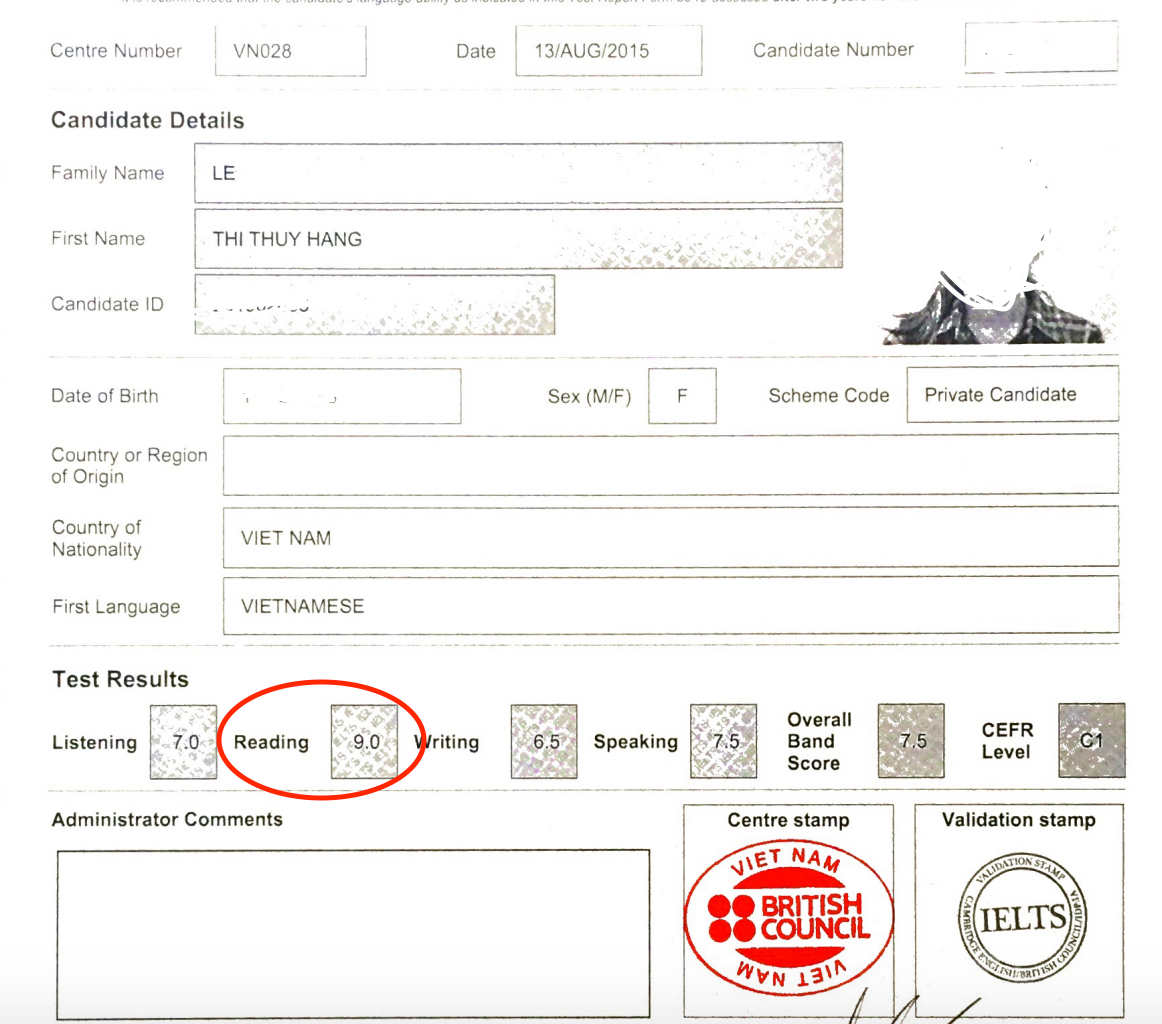
1. Read the questions first
I know there is controversy about this method. But it worked for me. Scan through the questions section first before reading the main passage. This will help you get the general ideas about what you will be looking for when you read the article.
Try to underline all the important keywords in the question. And remember, if it is multiple choice questions, at first read only the questions, not the answers listed in those questions because they will get you confused.
Don't try to read the texts first because you will end up reading them many times anyways. If you follow this order: questions, the article, then questions again, it will just be exhausting and time-consuming. Remember, read the tasks first to know what you are expected to find out, and proceed from there!
2. Synonyms are the key
In the IELTS reading test, there are a lot of synonyms and paraphrases. Sometimes the answer to a question may seem to lay very clearly in the article, however, some words look different. That's when synonyms kick in. The answers having words that bear the closest meanings to the original words in the article will be the correct answers.
To improve your ability to recognize synonyms, the best way is to expand your vocabulary and your ability to guess the meaning of words in certain contexts. You can do this by:
- practice a lot of IELTS tests
- read newspapers and articles in English
- watch movies with English subtitles
If you immerse yourself in the language with the above techniques, you will gradually develop a "sense" to guess words that look totally alien to you. This will be of great help when you do the real test.
3. Be careful with the answer sheet
I have, many times, stupidly filled in the wrong answers in the answer sheet, even though I got it right on the test paper when doing mock tests.
Use your time right and be as careful as you can when you fill your answer in the answer sheet. My advice would be to fill the right answer in the sheet right away after you are sure it is your final answer. Time is short in the IETLS test. Mistakes because of panic filling at the end when you don't have enough time are just sad.
Bonus tip: Do not leave a blank answer! Ever! Better try than not try at all.
So that's all I have to share about how I did my IELTS reading test. Reading and Listening in IELTS test are skills that you can practice and get better at in a fairly short amount of time, so try your best to get good scores on these skills to improve your overall band score :)
If you find my content helpful, support me by buying me a boba:
https://ko-fi.com/hangmoon
https://buymeacoffee.com/hangmoon

An unforgettable memory in Japan
A while ago, I was surfing Quora feed and found this question "What is an only in Japan moment?" I tried to answer on Quora a few times, but I am not a super active member there. However, this question brought me to a memory I had in my very first few days in Japan, so I decided to spend my time writing the answer to that.
Now that I have my own blog, I think it would be nice to share the story on my own space. Here we go:
"I was in Tokyo and I had to catch a bus at 8:05 to go to Sendai, a city that is 6 hours away by bus, for my internship.
It was my first time in Japan and I didn’t have a SIM card or pocket WiFi. Plus, my navigation skills are one of the worst ever.
After arriving at Ikebukuro train station, I had to go to a bus station in Ikebukuro called Sunshine city that is around 1.3 kilometers away, but I wasn’t prepared. I didn’t load the map. I thought there would be WiFi in the station, but there wasn’t. So I came out of the train station freaking out. It was 7:40.
I went around and encountered 2 people. The first one - a young girl, refused to help me because she didn’t understand what I was saying in English and she just crossed the street, leaving me standing in despair.
The second one barely spoke English. I showed him the name of the station on my phone. He told me to turn right (in Japanese, I just guessed it from his hands pointing).
So I turned right and still had no idea where to go next. Then I saw 2 men loading things up a truck. I tried my luck once more. I asked one of the men where the bus station is. And he understood - woo hoo. He said he would take me there. I had 2 luggages with me, a huge one and a small one. He offered to help me take the big one. It was 7:51.
My freaking-out facial expressions must have told him that we didn’t have much time. So we both ran. Like really running. With the luggage it was not easy. Without him I would have never made it.
The moment I saw the bus was 8:03. I could not express how grateful I was for that man. He was all sweaty and breathing heavily. I kept bowing down and said “Arigato Gozaimasu”, which means Thank you very much (one of the few Japanese phrases I know). He was smiling and gave me a head pat, then said “You are welcome”.
I got on the bus and it left at exactly 8:05.
So that was my very first experience in Japan. Amazing country with the nicest and most honest people."
You can see my original answer on Quora here.
Cheers :)
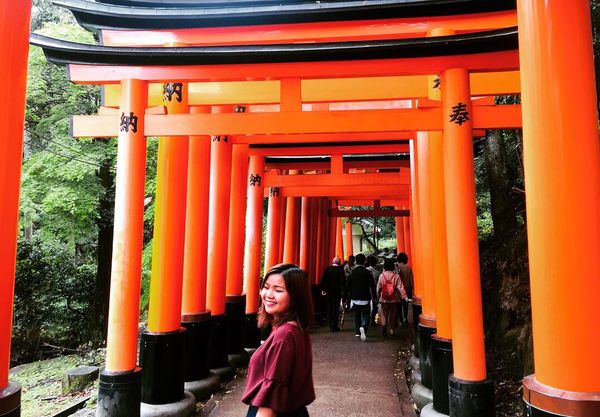
How to prepare for exchange study in Japan
I will share with you how I came to Japan and enjoyed three wonderful months there as an exchange student from Finland, or more specific, from Turku University of Applied Sciences (TUAS) in Finland.
When to apply?
Different from going on an exchange for other countries, the application period for Japan exchange study is open earlier at the beginning of September.
Keep a close look at your email inbox because at the beginning of September there will be emails about how to apply for Japan exchange study/ practical training.
The deadline is normally at the end of September, so remember to submit your application in time.
TUAS has partners from Tohoku region in Japan. There will be a lot of helpful guidance coming from school and other students who joined the program previously. Here is one of the guides: https://issuu.com/sannik/docs/your_guide_for_practical_training_i
The application process is quite straightforward, just submit the documents that are required.
If you have any questions, you should contact International office. The teachers there are always friendly and helpful, they will help you to get what you need or at least direct you to the right people whom you can get help from.
Getting a visa
After you are accepted for the practical training period, you will be thinking about booking your flight tickets and getting all excited for Japan.
However, if you are not an EU citizen like me, there may be a high chance that you have to ask for a visa before entering Japan.
About the documents needed for your visa, you can read more at https://www.mofa.go.jp/j_info/visit/visa/index.html. For Vietnamese students, there is a separate page for visa procedure: https://www.mofa.go.jp/ca/fna/page23e_000538.html
For my case, I submitted these papers:
- Visa application form: https://www.mofa.go.jp/files/000124525.pdf
- Letter of guarantee
- Invitation letter
- Details of organization
- Itinerary in Japan
- Copy of flight tickets/ Flight tickets reservations.
- Passport copy
- Photo
- A confirmation letter from TUAS
You can ask for Letter of guarantee, Invitation letter, Itinerary in Japan from your partner school in Japan. They will fill in these papers (in Japanese), stamp them and send them to you by post.
Remember to ask for these documents early enough so they can reach you in time. I think 2 months before your departure would be reasonable.
By the way, if you have a specific wish for a certain school in Japan, remember to put the name of that school in your motivation letter. They will consider your wish when assigning you to a school.
In case you are wondering if this can be done online, from my experience, the answer is No. I sent an email to ask the Embassy if I could submit an electronic application, and I got their reply:

After you have collected all the necessary papers, send them to the Embassy address (Unioninkatu 20-22, 00130 Helsinki).
The application processing time is normally 2-3 weeks. I got my visa decision after 2 weeks. There was an email from the Embassy that asked me to go to the Embassy in person with my passport.
The visa you will receive will be stick to your passport and look like this
Congratulations, now let’s get ready for your Japan visit 🙂
What to pack?
My personal advice is to keep your luggage light. Why?
You will most likely stay in a dormitory with a kitchen that you can cook in, and all the cooking utensils are provided by the school. Therefore, you only need to take the essentials with you for a 3-month stay.
On top of that, Japan is a super interesting country. There will be tons of things you want to try, buy, take home as gifts, and they will fill up your luggage pretty quickly. If you are willing to buy another luggage to fit them and buy extra luggage from the airlines, then all good.
My packing list recommendation:
- Clothes: summer clothes as you will arrive in April and leave in July. The weather would be a bit chilly at night but other than that summer-ish. Bring light and easy-to-pack clothes. But remember to get one set of formal clothes for your final presentation day. There will be photos taken. I took my red áo dài with me :))
- Shoes: sneakers that are comfortable for walking because you will walk a hell lot in Japan trust me; slippers for walking inside the dorm; heels if you want to be beautiful sometimes in dresses :p
- Skincare products. If your skin is not too sensitive, try Japanese products. It’s a heaven for cosmetics and skincare. Cheap price with top quality. No wonder why Japanese girls have baby-like skin.
- Electronics: laptop, charger, phone, tablet, adaptors etc…Japanese sockets are different from the European or Vietnamese ones, so take adaptors with you. Also notice that Japan electricity supply is at 100V.
- Important documents: passport, residence permit, flight tickets, confirmation paper for the end of practical training period…
- Essential goods: toothbrush, comb, nail clipper, … (of course, you can buy all this in Japan, but just in case you want to be well prepared)
- Gifts: bring small gifts to show your appreciation. I brought chocolates from Finland and paper fans from Vietnam to give the Japanese professors, the dorm lady and the teacher who helped me with all the papers listed above for my visa application. Also, you may meet people from a different culture and in the end, you may want to give them something from your culture so small gifts will be helpful.
Learning Japanese
I cannot stress this enough: Learn as much Japanese as possible before your departure! Why?
Speaking from my own experience, Japanese people are not very fluent in English. Of course not all of them, but most of the Japanese I’ve met have difficulties listening and speaking in English. If your destination city is a big/ touristic city such as Tokyo, Osaka or Kyoto then you don’t have to worry much because in these cities people can communicate in decent or very good English. But if you are a student from TUAS, it’s certain that all of the partner schools, at the time of writing this blog post, do not belong to the category of “popular” cities.
Before you go to Japan, TUAS will organize a Japanese course worth 3 credits to prepare you for the basic Japanese language. Try to learn as much as you can from this course. Ideally, try to hold a simple conversation with your Japanese teacher. Besides, try to note down important phrases and memorize them because you never know when you may need to speak Japanese in Japan. I had an incident at the beginning of my time in Japan which is somewhat related to this Japanese language thing.
Most importantly, being able to communicate in Japanese will open a whole lot of opportunities for you to explore Japanese culture and have Japanese friends. Japanese people are famous for being shy, but if you make an effort, they’ll slowly open up to you. Speaking with them in their native language would certainly speed up this process.
Insurance
It is a good idea to check in advance with your insurance provider if the insurance covers your stay in Japan.
I used Swisscare insurance for students. Last year I emailed them to ask and get the answer that my plan didn’t cover Japan, I would have to buy a separate one.
Insurance was of great help for me because during my stay in Japan I had several problems with my wisdom teeth. I had to see the dentist 3 times. Because I didn’t have any Japanese domestic insurance, I have to pay the full price. For your reference, the cost of taking out one wisdom tooth and the medicines that went with it, in my case was around 110 euros. Thanks to the other insurance that I bought, I was reimbursed the full amount of money.
In a nutshell, make sure you have a valid travel/ health insurance before going to Japan.
Little things to notice
- Your partner school in Japan will most likely pick you up at the local train station or bus station. Mind you, Japanese people are SUPER punctual. So when you calculate the time that you will arrive, add some extra time for transferring from one stop to another. Don’t make the Japanese partners wait. If somehow you cannot make it on time, always inform them as soon as possible.
- Most schools have student clubs such as kendo (sword fighting), music, Ikebana (flower arrangement), badminton, table tennis, drawing etc… Be active, look for a club that interests you and ask your teacher how to join.
That’s it for now. The post will be updated whenever I remember something that I should share. I wish you good luck with your Japan journey 🙂
If you find my content helpful, support me by buying me a boba:
https://ko-fi.com/hangmoon
https://buymeacoffee.com/hangmoon
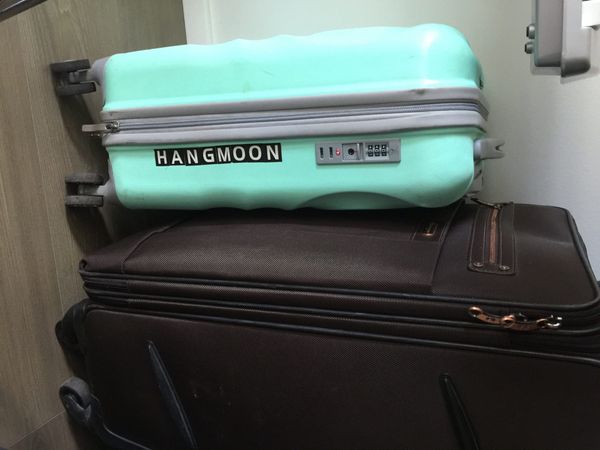
My Aeroflot lost luggage story
I arrived in Helsinki after a long flight. One that lasted for 12 hours from Ho Chi Minh city to Moscow then another one that was about 2 hours from Moscow to Helsinki.
I came to the luggage room and started waiting for my luggage.
After 30 minutes, there was this panic and uneasy feelings creeping in. I knew something was wrong with my luggage. They were not there. And they wouldn't in that day, I just knew it...After having been on numerous flights, finally this day came. The day when my luggage was lost.
I came to the Service counter and asked the lady in the receptions about what I could do. She asked me for my information: my name, phone number, address and email. She also asked me to describe my luggage as detailed as possible, like what colors they are, what types they are (she showed me paper where there are pictures of different types of luggage, and asked me to pick the ones that are the most similar types to the ones I own), what brands, if there was anything on them...Then she gave me a paper with a tracking number where I supposedly could track my luggage status online.
I went home. The next day I got a text message saying that my luggage was located. The message also includes a flight number which I later found out that it's the flight with the destination of my city Turku.
The day after that, I got a phone call from a lady in Turku airport. She asked if I would be home during 12-3pm that day. At 2 something a man pressed the bell of my apartment, and tada, my dear luggage has found its way home.
So in general, it was not a totally horrifying experience. Well at first it was, because I was panicking at the thought of losing all the dry Vietnamese food I brought with me ==' But on the other hand, losing the luggage saved me from carrying them all around, they sure were not light. And I got them delivered to the front of my house, in 2-day time, so not too bad.
Lessons learned from this: Always carry the most necessary and important things in your carry-on luggage. For me, I luckily had my skincare products and all the electronic devices in my carry-on. You never know when airlines will betray you. But if they do, keep calm, what is yours will find a way to go back to you :)
If you find my content helpful, support me by buying me a boba:
https://ko-fi.com/hangmoon
https://buymeacoffee.com/hangmoon

Sakunami Onsen review: Where you absolutely should visit while you are in Japan
Sakunami onsen is an absolutely must-visit destination while you are in the Miyagi region. Here is the Sakunami onsen review that may help you get more insight about the place, price, and how to enjoy onsen like a local.
What is in Sakunami?
Sakunami onsen has several ryokan (Japanese inns) along the area. It's like a hotel with onsen, you can either choose to stay overnight at the hotel, or have a day trip to the onsen and enjoy the hot spring for a few hours during the day that the onsen is available for guests not staying at the hotel.
As an exchange student living in Sendai National Institute of Technology dormitory, it was easy for me to go to Sakunami onsen. I just had to take a train from Ayashi station to Sakunami station, with the JR train heading to Yamagata direction. It took 10 minutes for the train ride.
After arriving at the train station, you will have to wait for the free bus to come and pick you up to the inn you chose. Here is a picture of the time and fees for these inns:
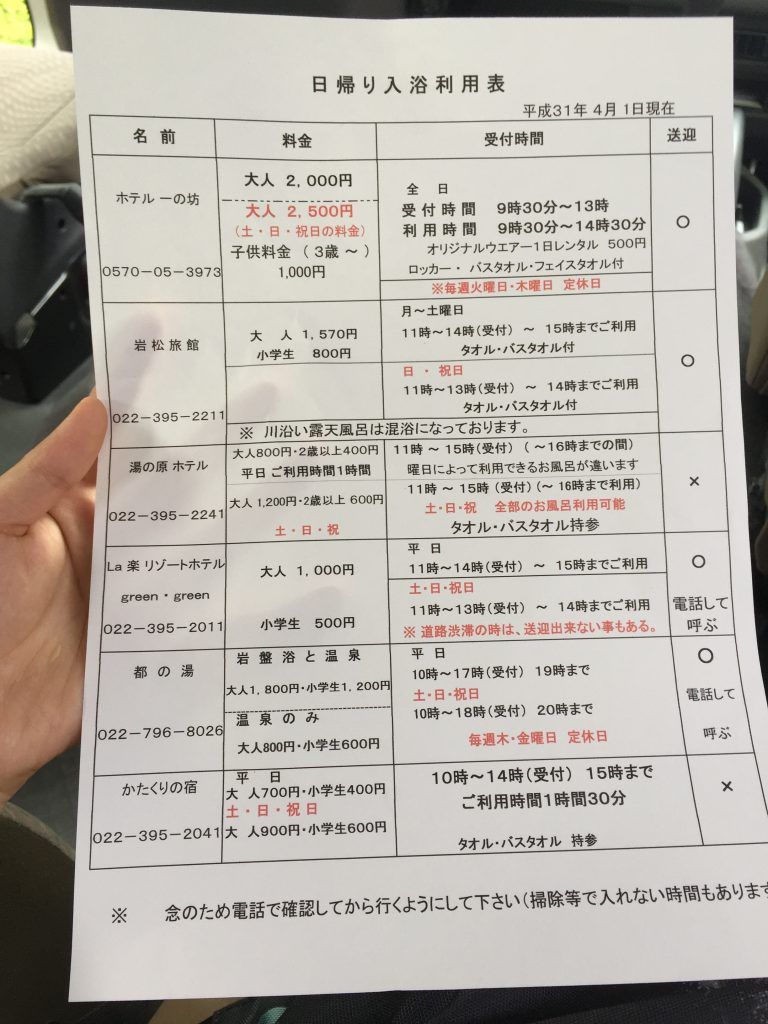
The first inn is probably the most popular one: Yuzukushi Salon Ichinobo (here is their website: https://www.ichinobo.com/sakunami/). It is a bit more expensive (2000 yen for weekdays, 2500 yen for the weekend) because they serve tea/ coffee and sweets after your onsen session, included in the price. It was my aimed destination, but sadly when I reached Sakunami onsen, the lady at the station said Ichinobo was not open for guests on that Monday because of something related to their holiday policy :(
So I took the second option, which was Yosenkaku Iwamatsu Ryokan . They are open from 11 to to 14. The bus came around 10:15 and took me to Iwamatsu inn.
What is in Iwamatsu?
It's a spacious hotel. My first impression was really good.
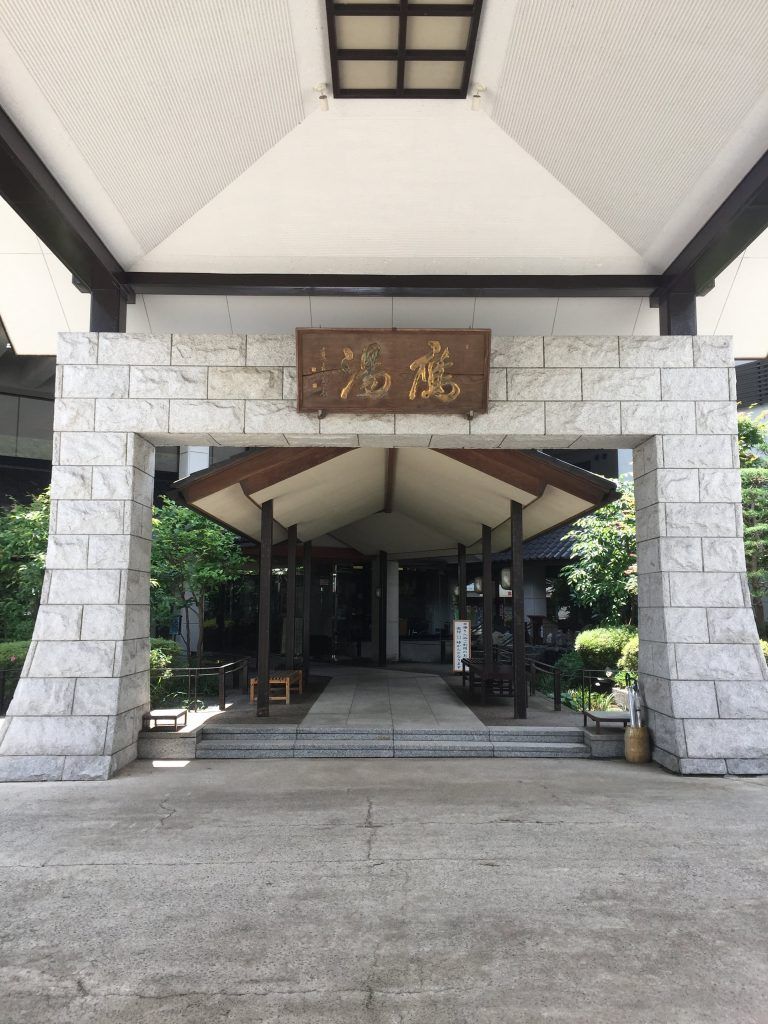
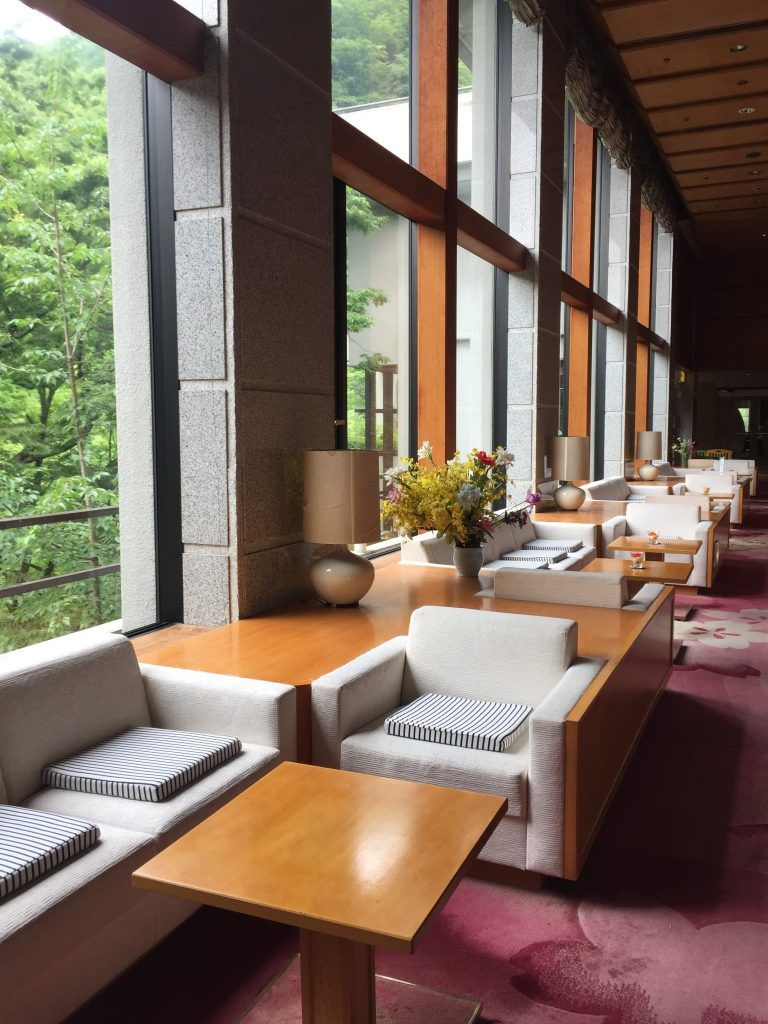
After paying the fee of 1570 yen, I was given 2 towels: a big one and a small one. I saw Japanese people used the small one to put on the top of their heads, maybe to wipe the sweat?
I put the shoes off and put on the slippers they gave me. There was a map and guidance from the receptionist about where to go. For women, there are 2 baths you can take: one indoor and one outdoor. There are also mixed baths, which means it's for both men and women. I was not brave enough to take a mixed bath this time lol.
How to take onsen like a pro
Guide to take onsen:
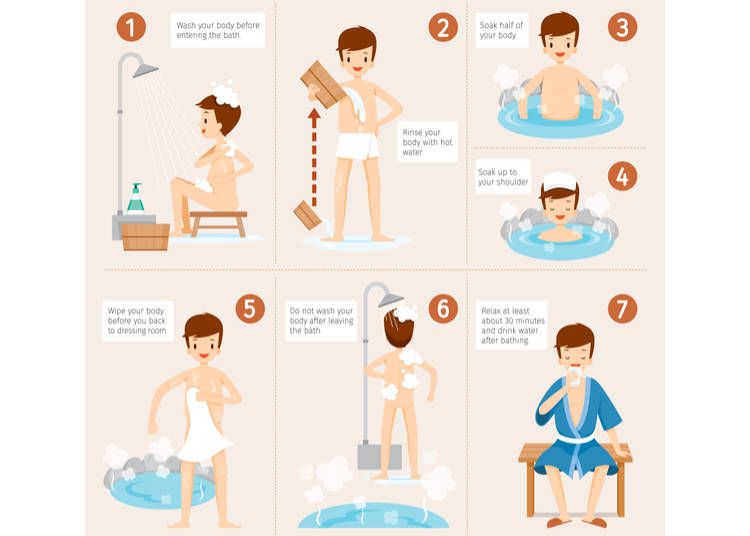
I recommend taking the outdoor bath first. The scenery is breathtaking. It's located right next to a strong stream of water in the middle of what seemingly looks like a forest. No pictures were allowed so I couldn't take any pictures, but the view was awesome.
It was a relaxing experience. The hot water was a bit too hot for me at first, but after a while I got used to it and started enjoying it. If you took sauna before, you probably can relate to what I mean here. The hot spring is said to have several minerals that are good for your health, so after taking onsen bath you shouldn't wash your body.
Everything a girl needs can be found there: hair dryer, hair rubber band, Shiseido lotion, face wash, cleansing oil, moisturizer, mini comb... I love the way the Japanese take care of little details. They always try to make everything as convenient for you as possible.
Afterwards, the bus took me back to Sakunami station (for free). It was a short ride because the inn is just 3 kilometers away from the train station.
Final words
Sakunami onsen or any other onsen is definitely a must-have experience when you are in Japan in general. I hope this Sakunami onsen review helps you a little when you decide to try onsen.
If you find my content helpful, support me by buying me a boba:
https://ko-fi.com/hangmoon
https://buymeacoffee.com/hangmoon

